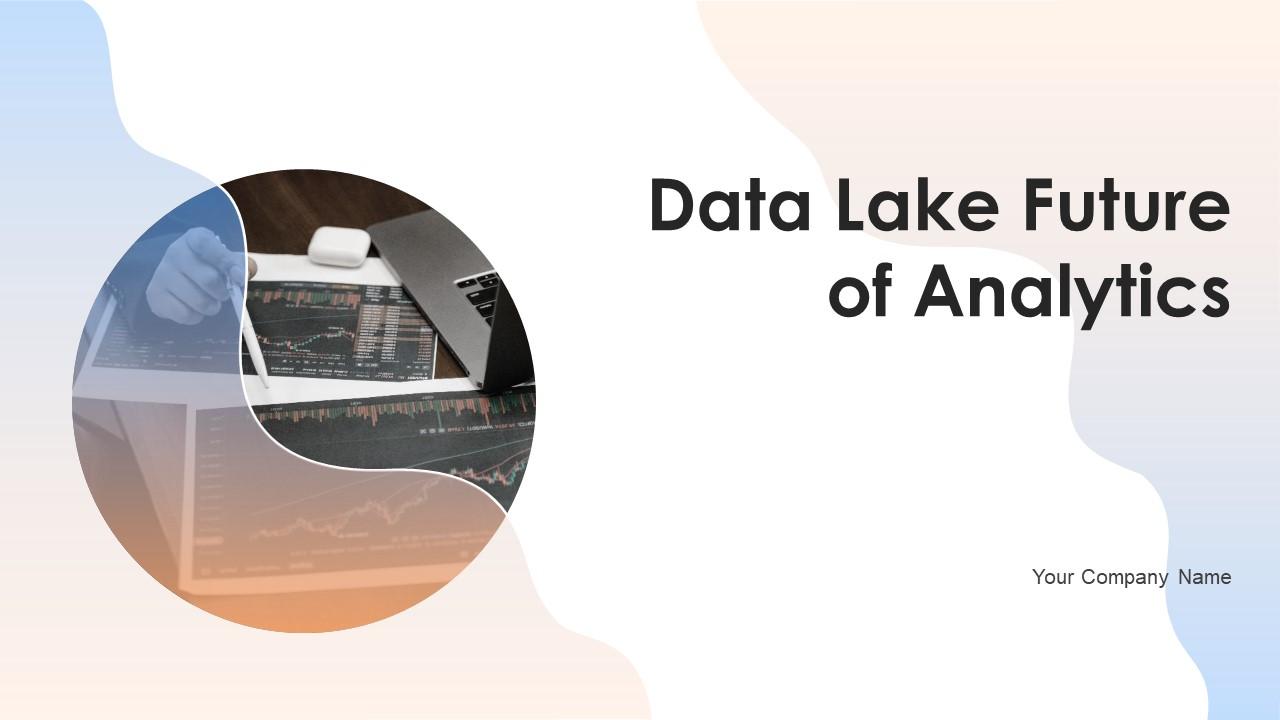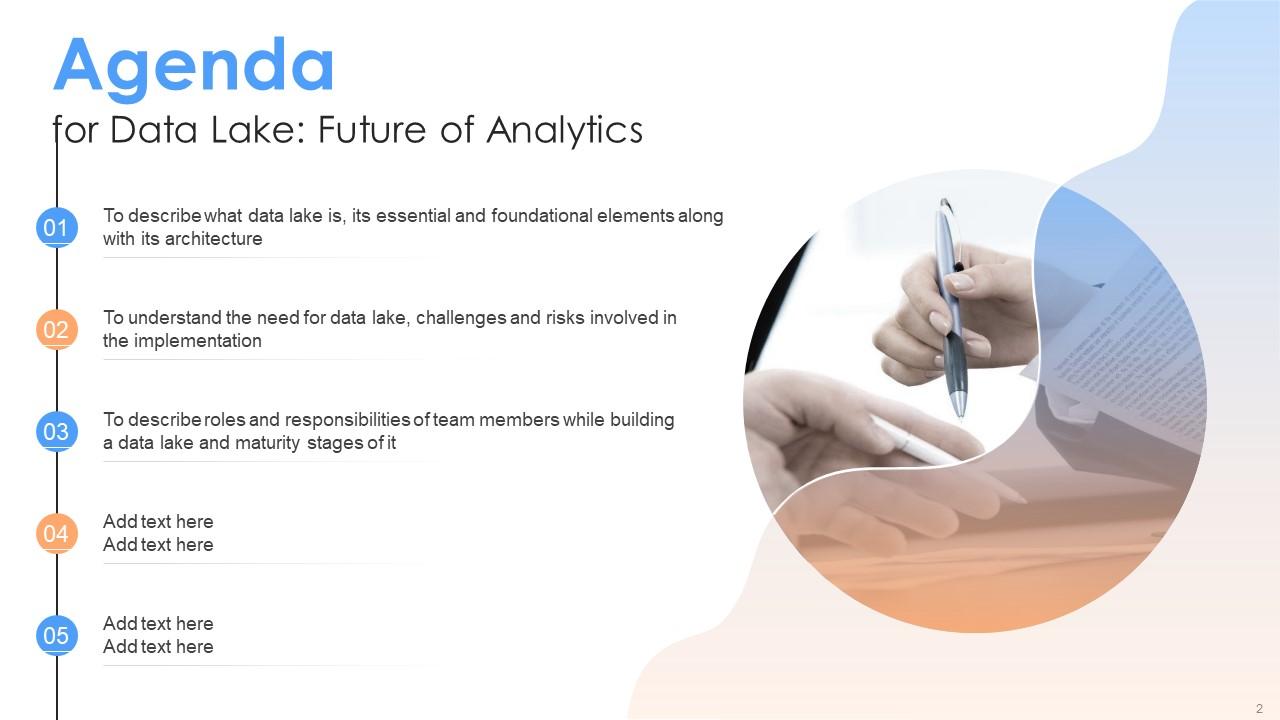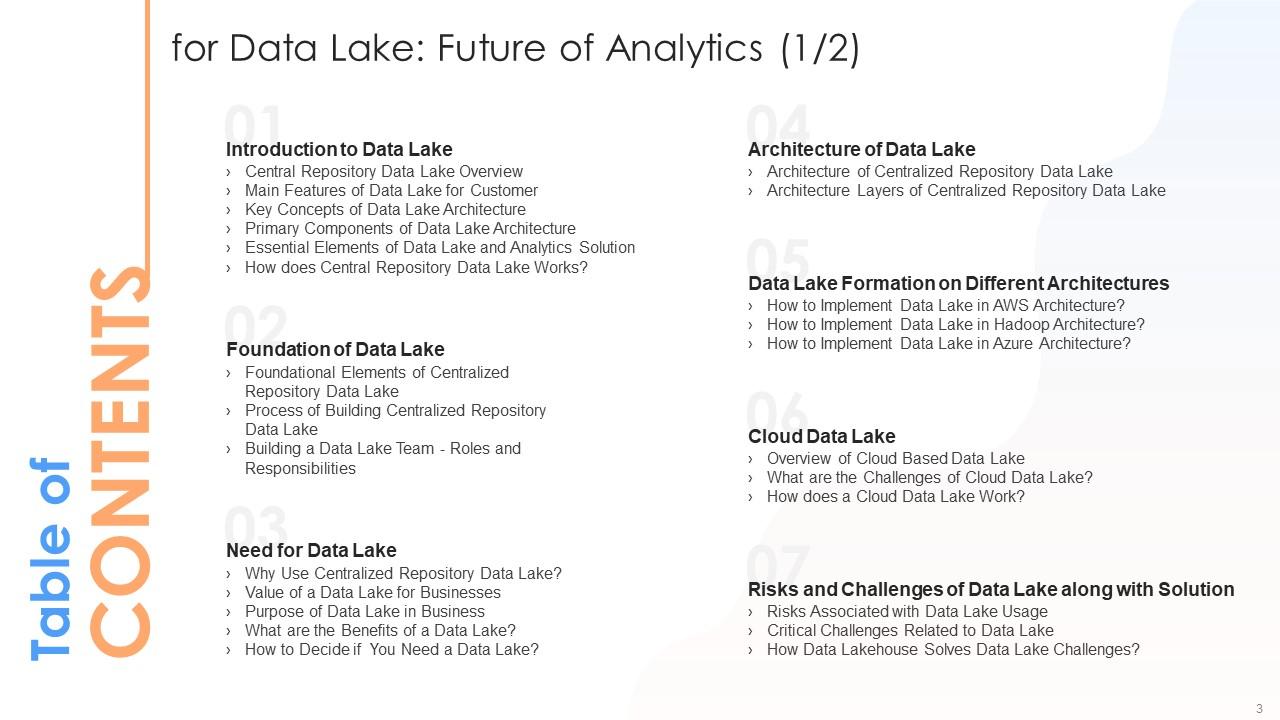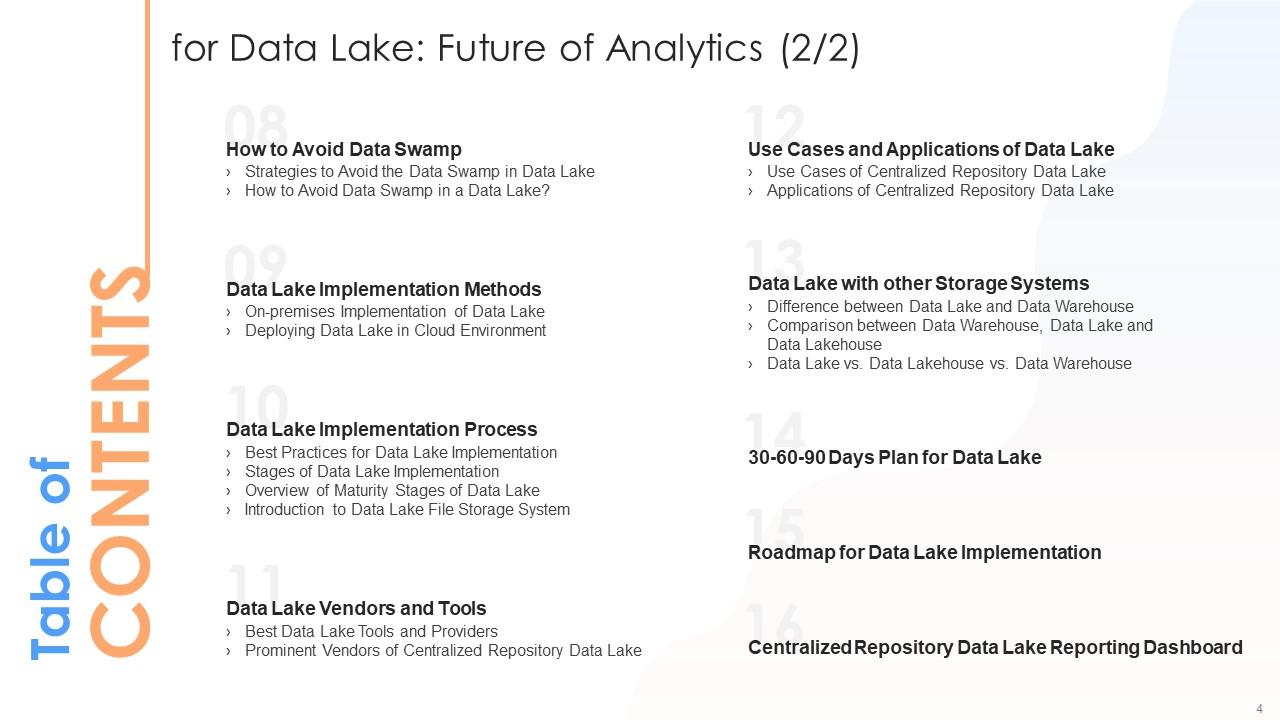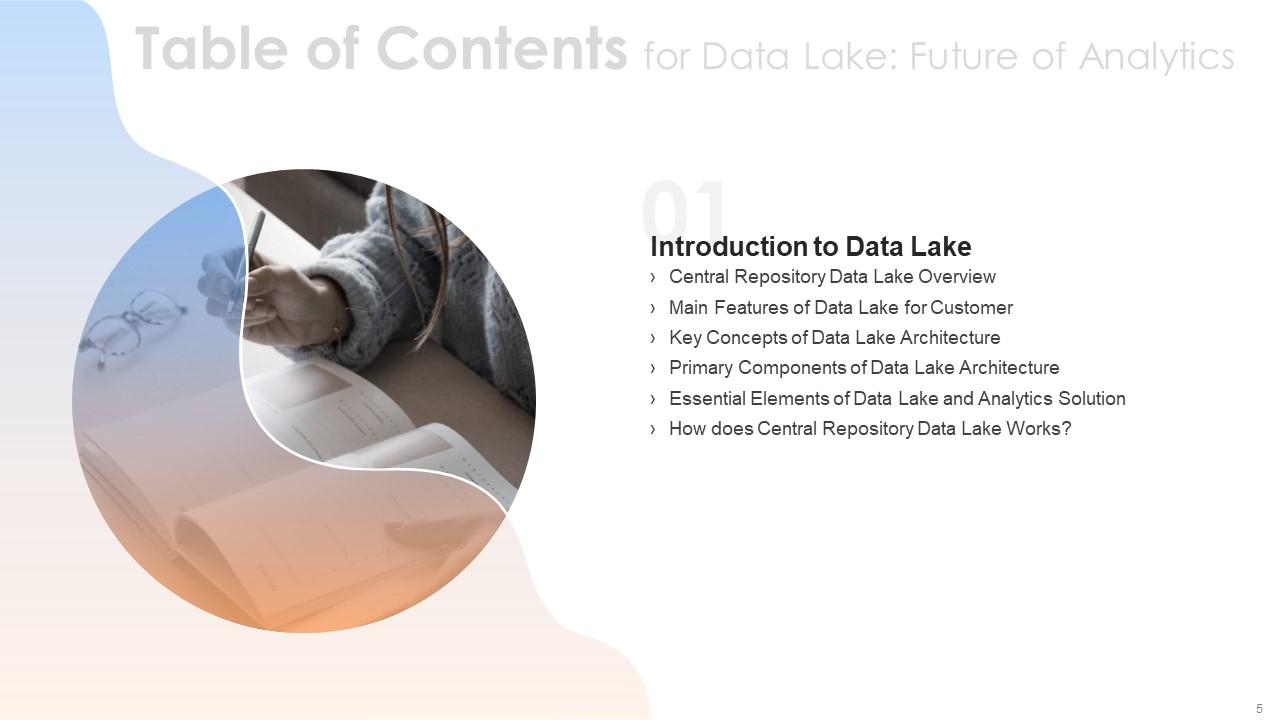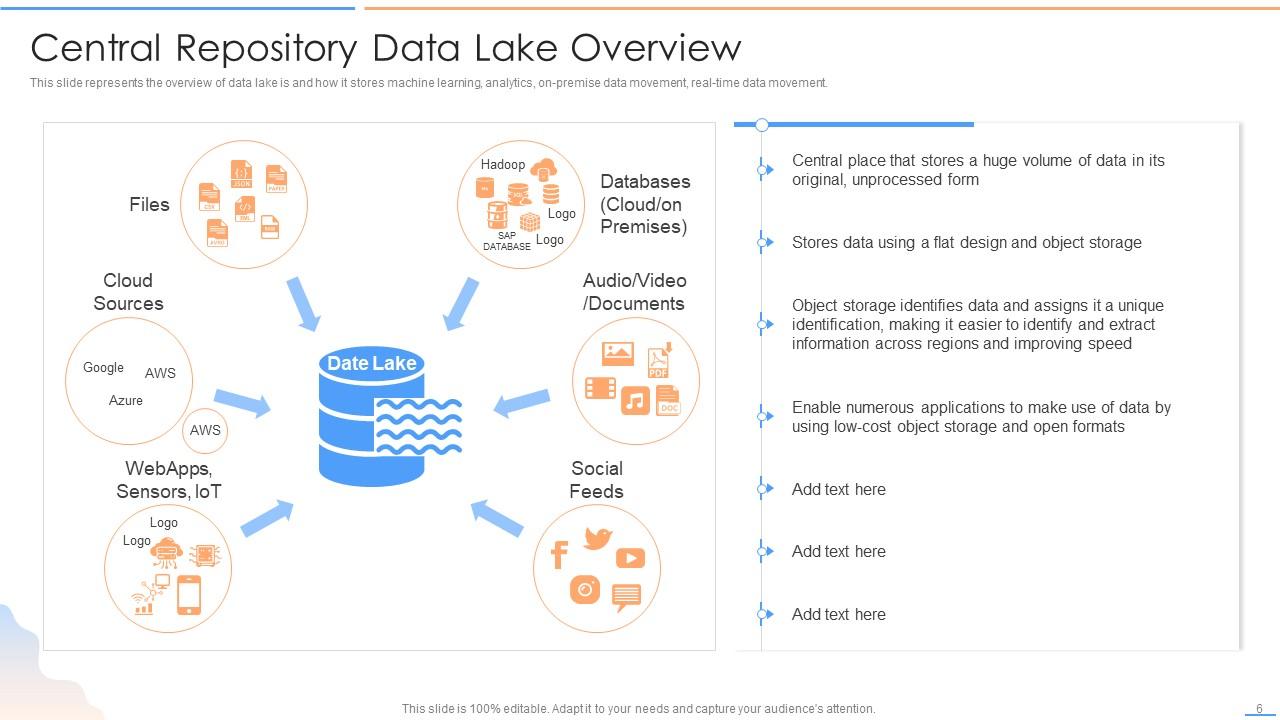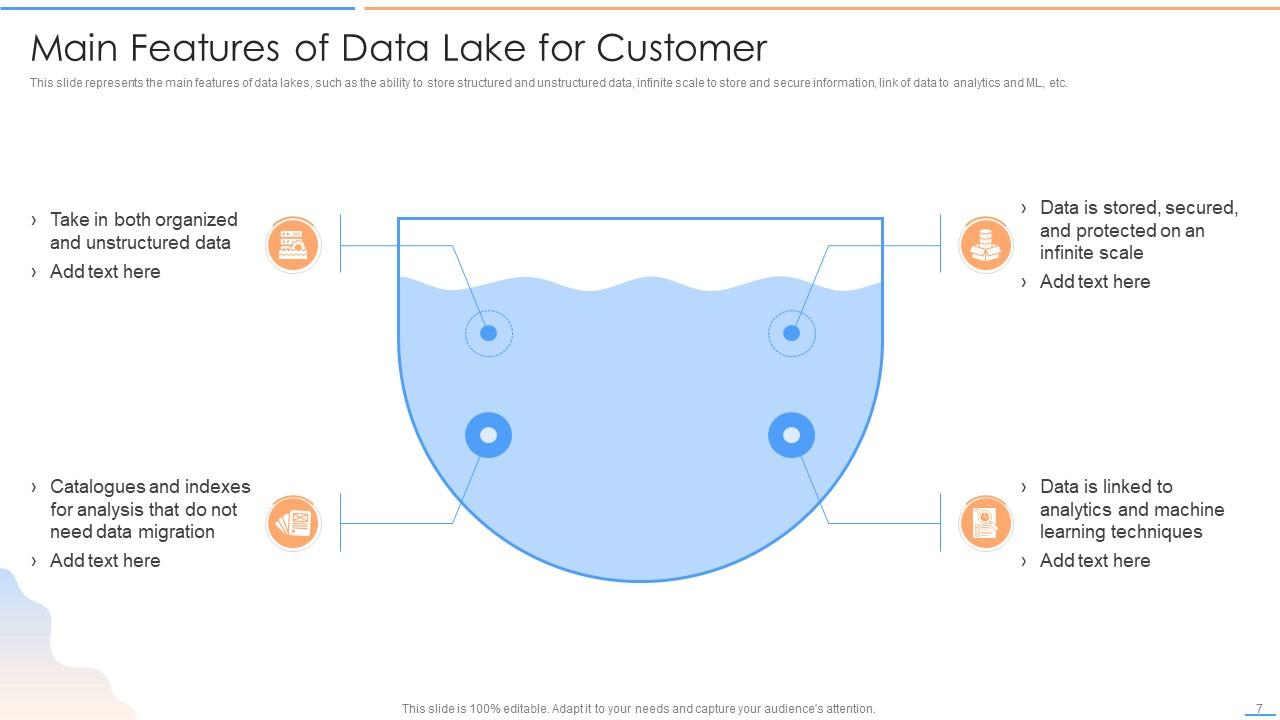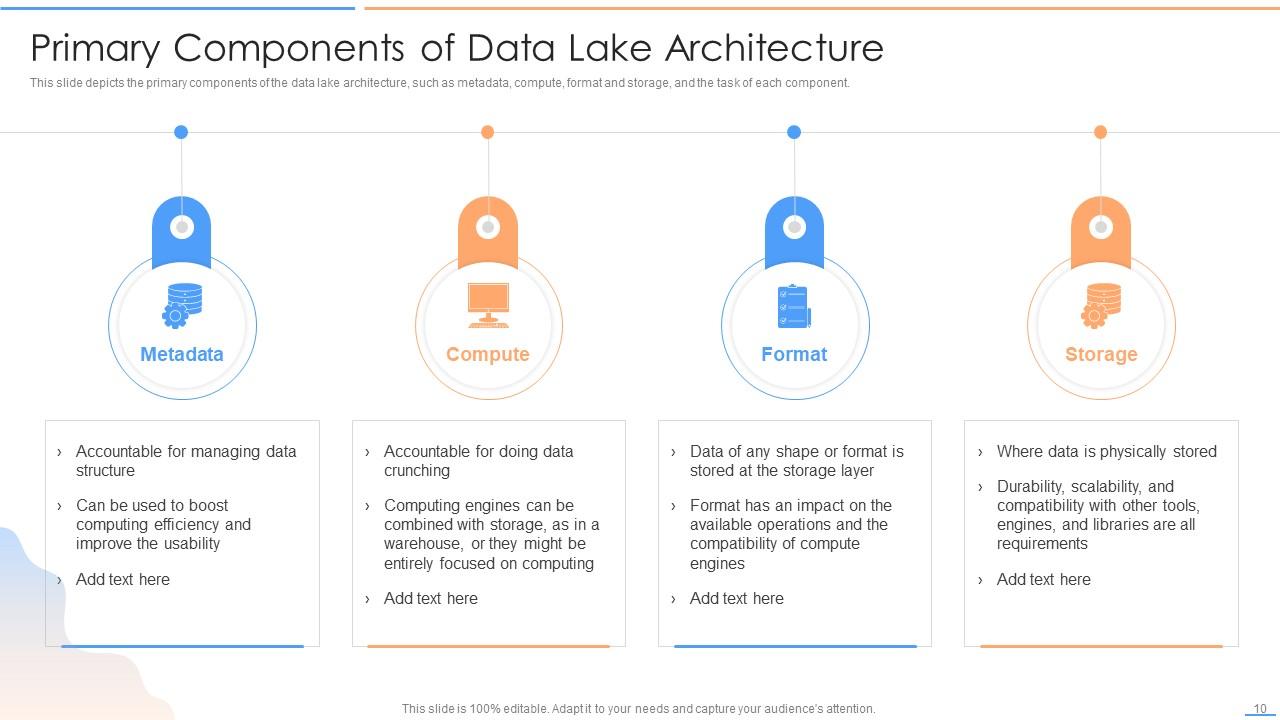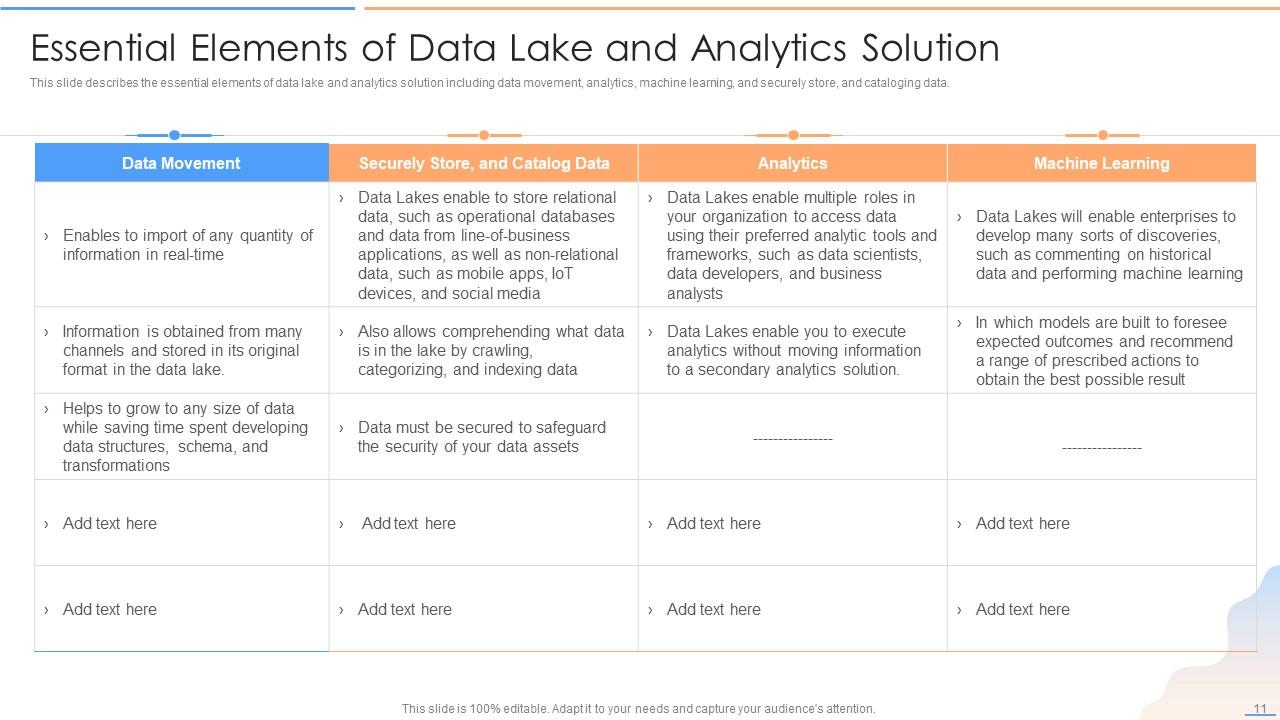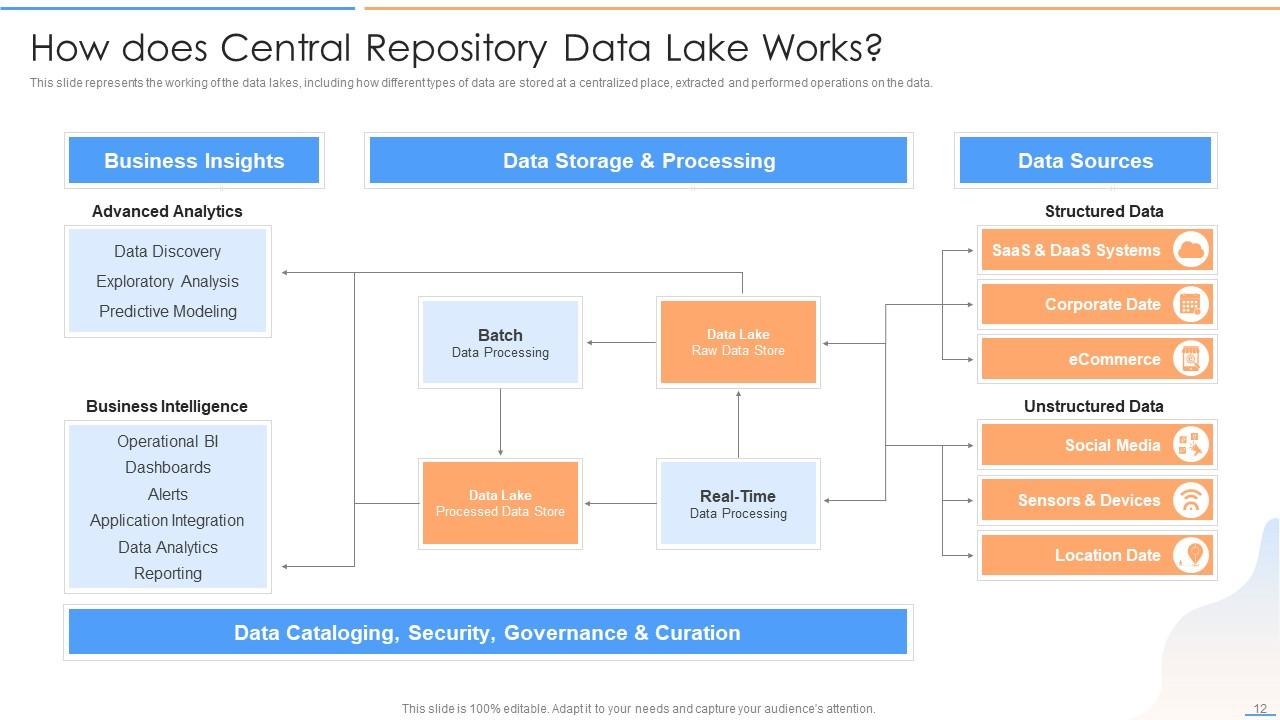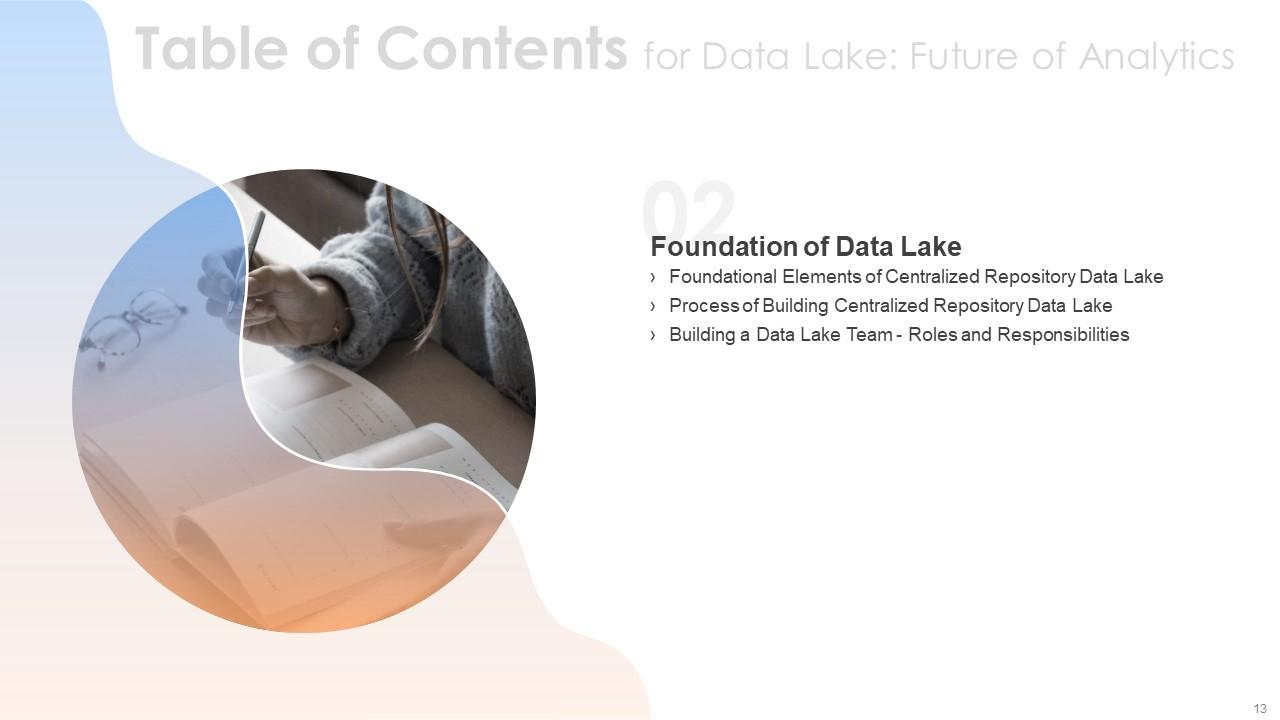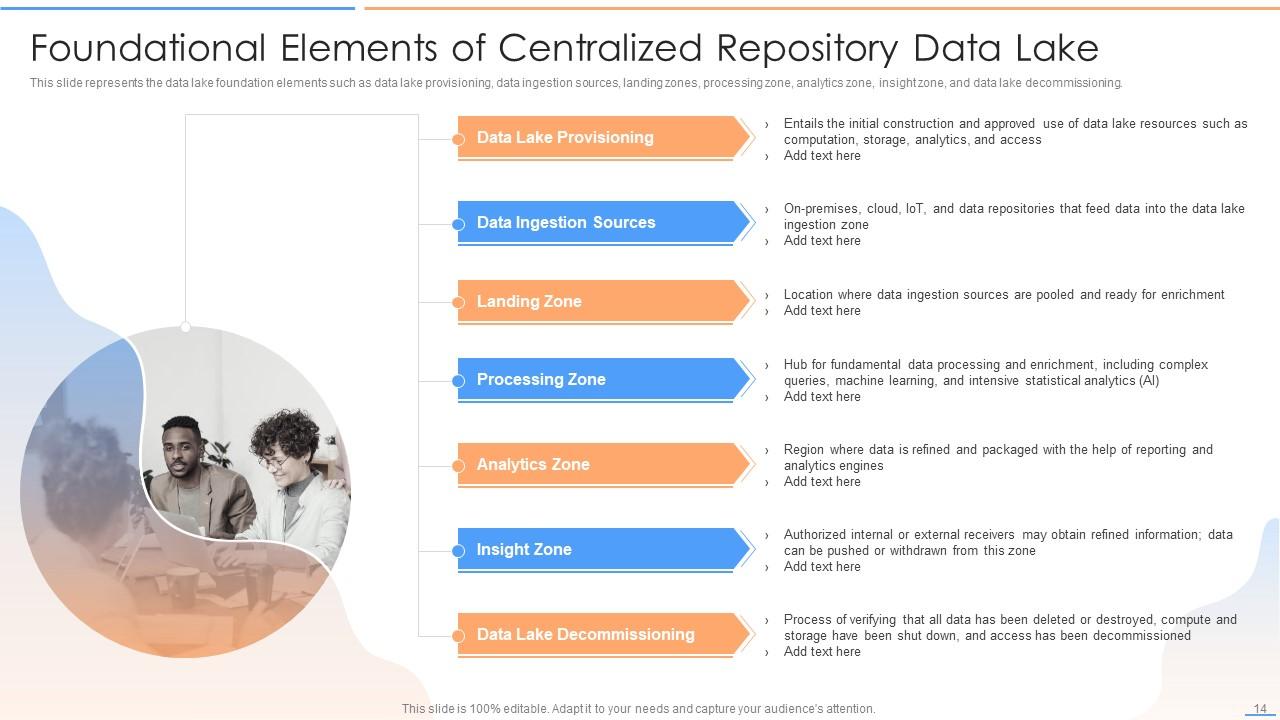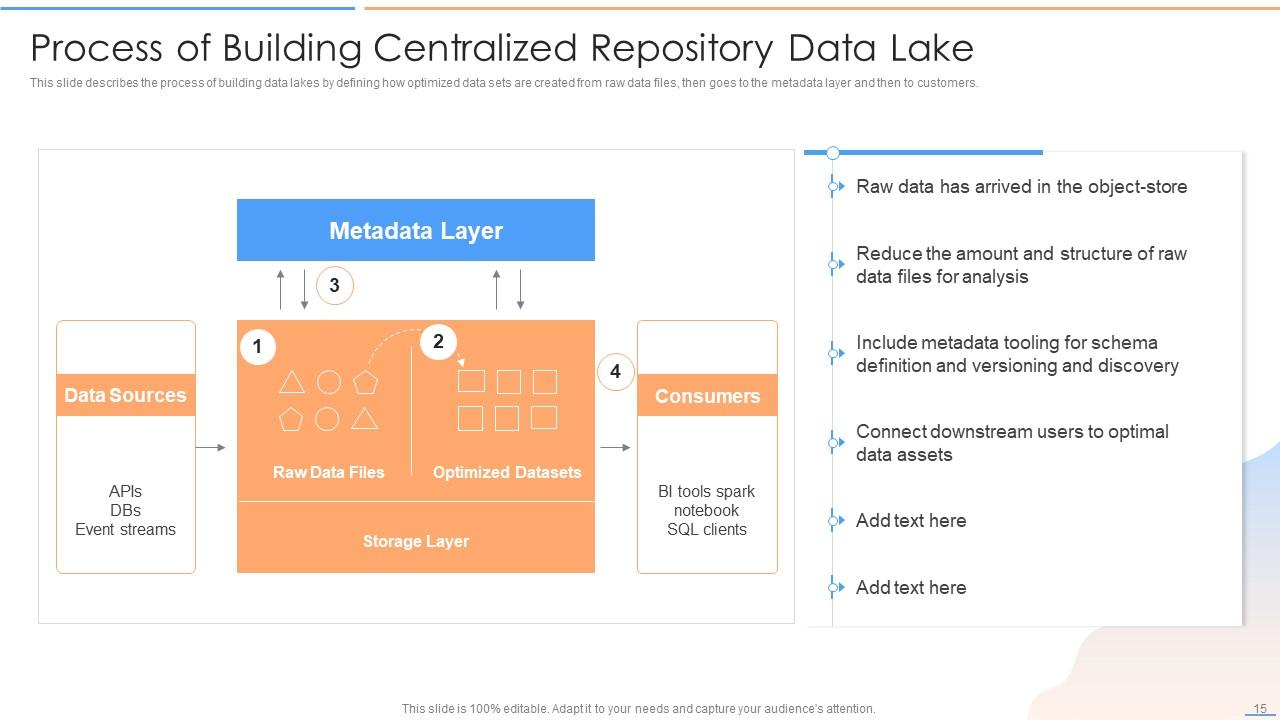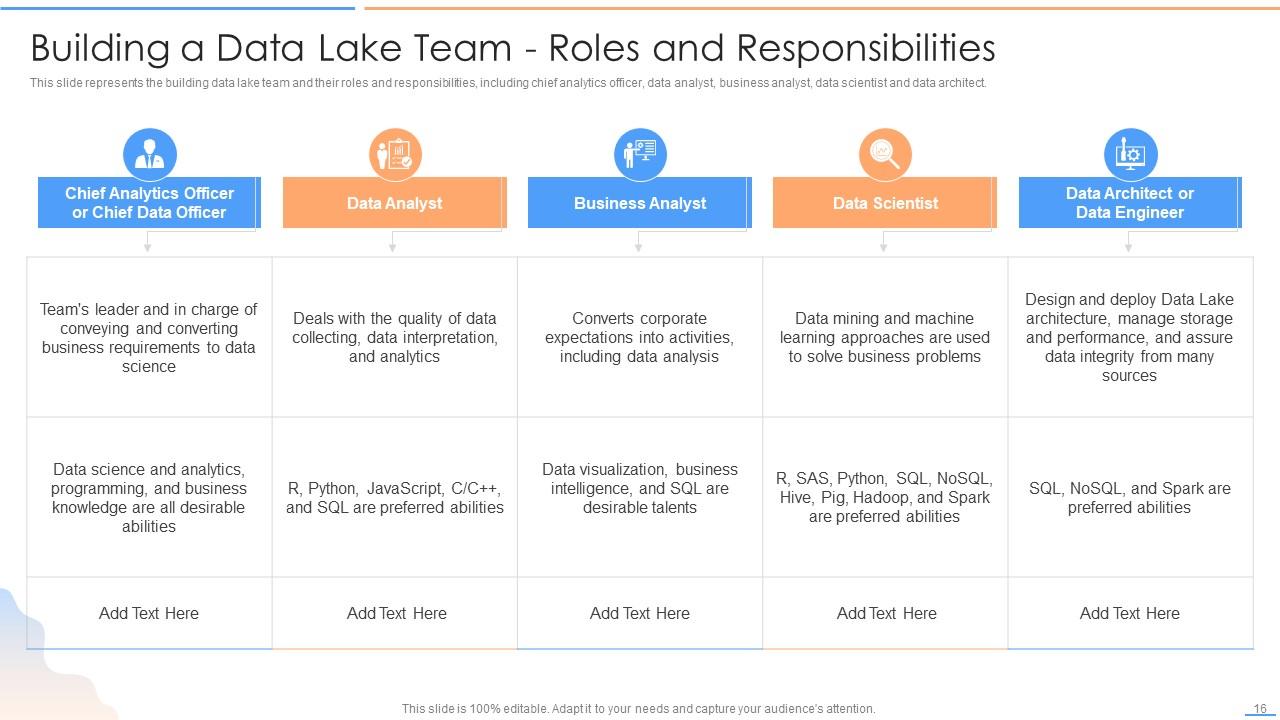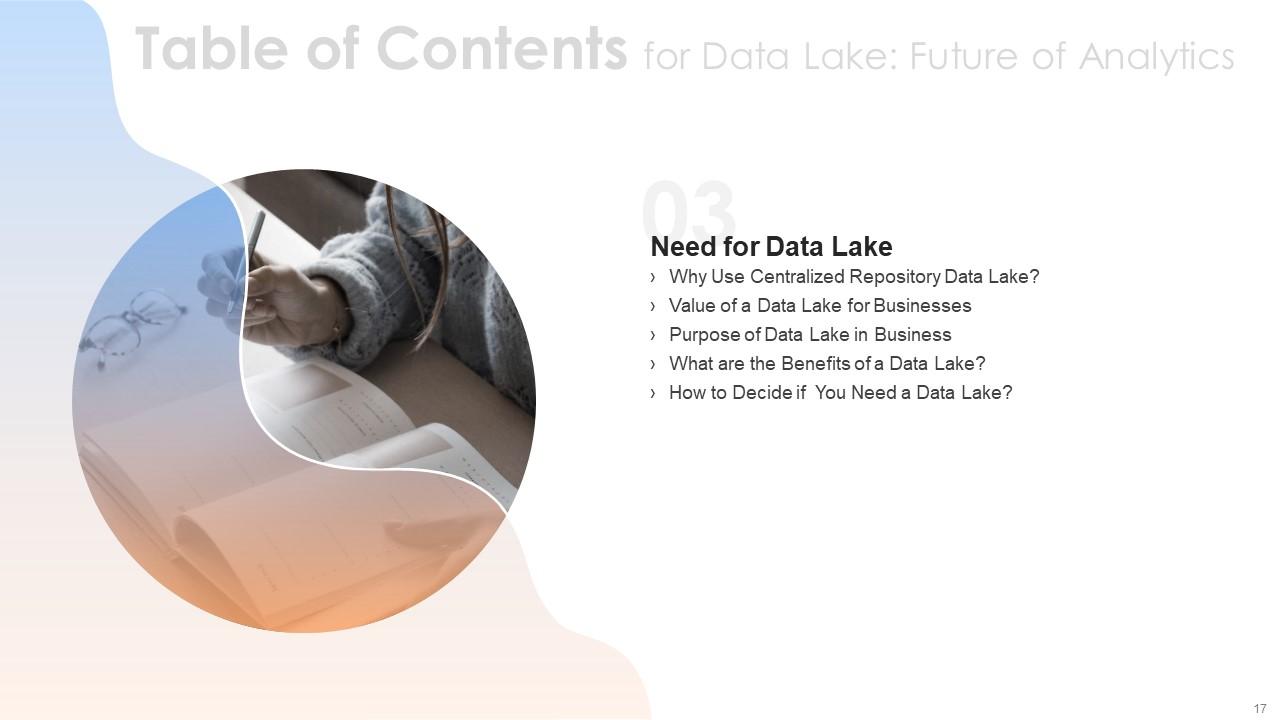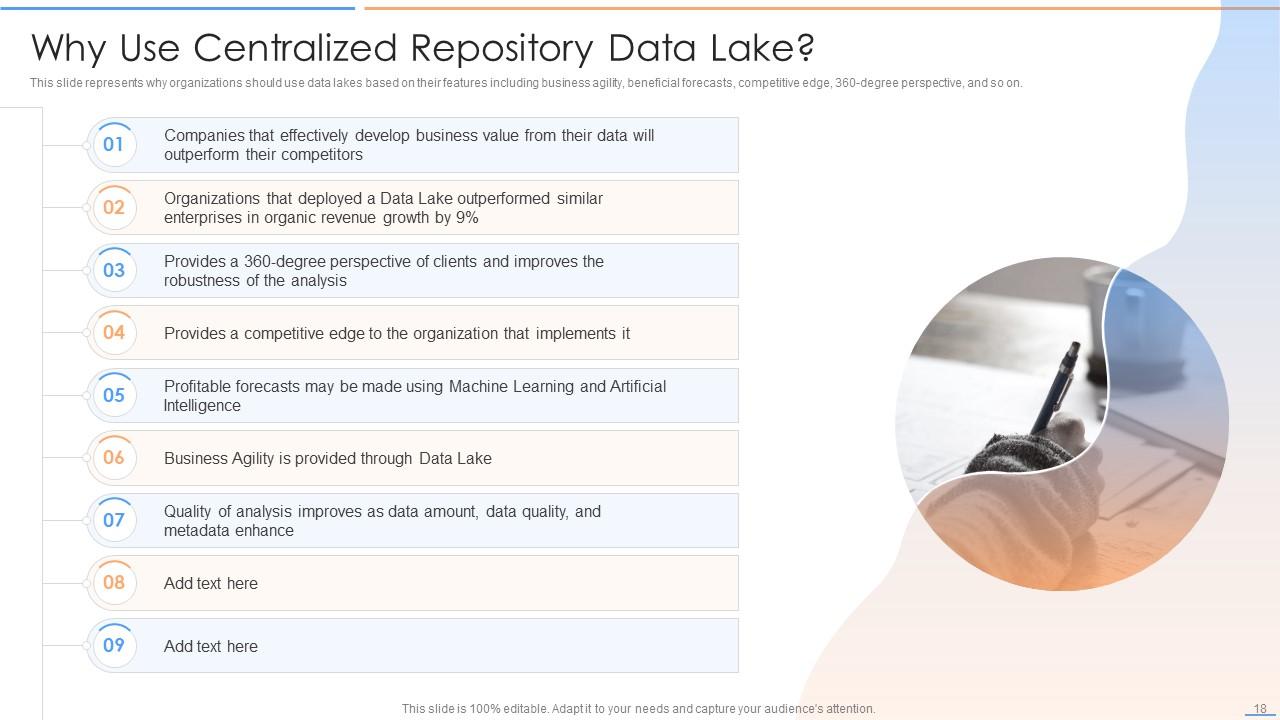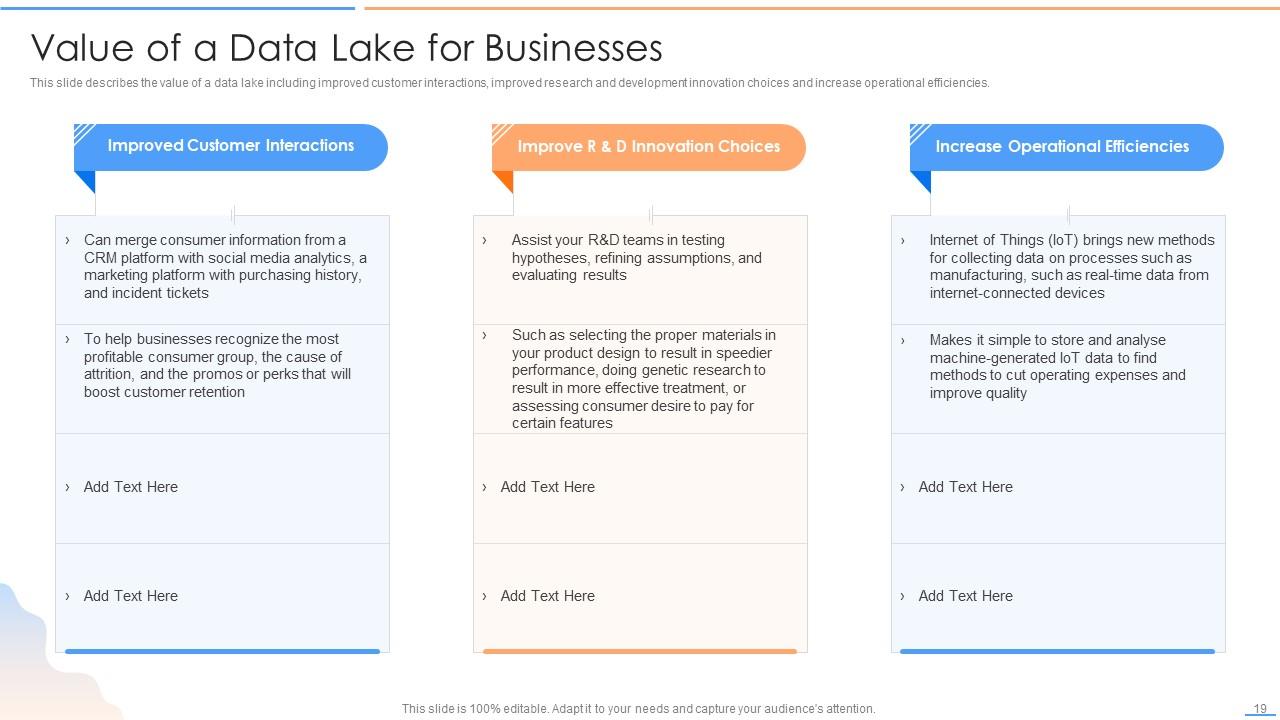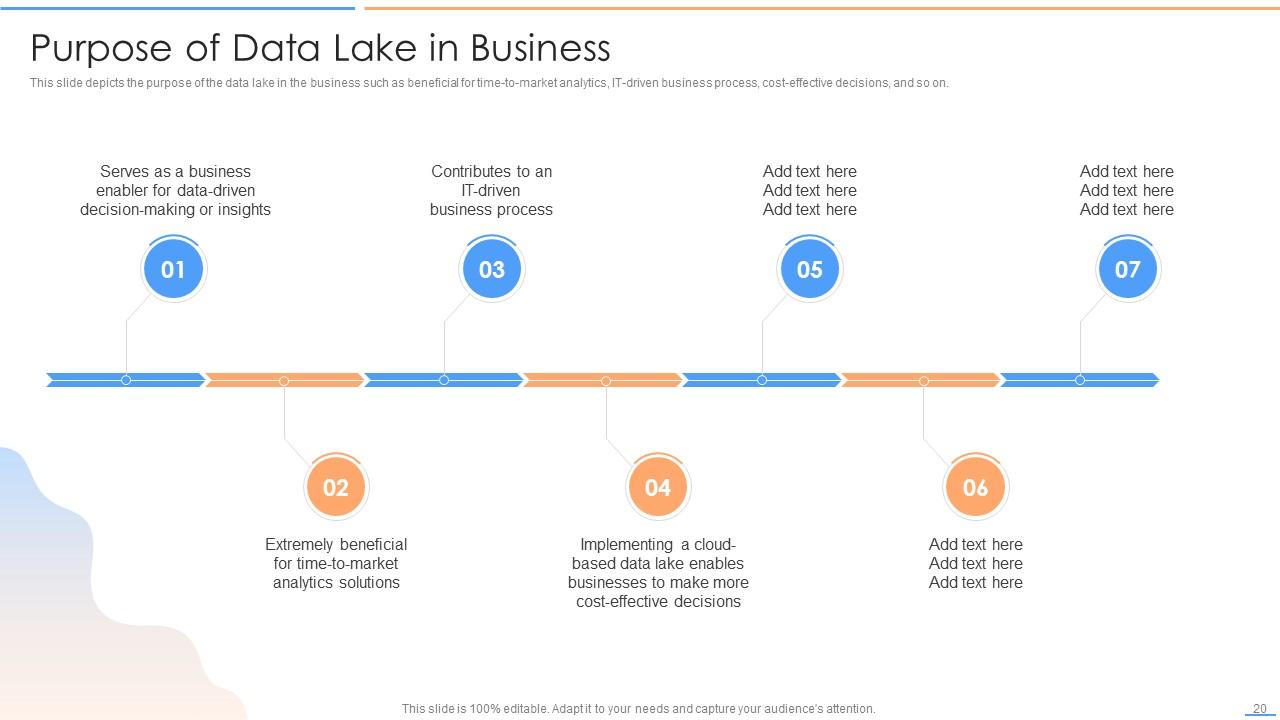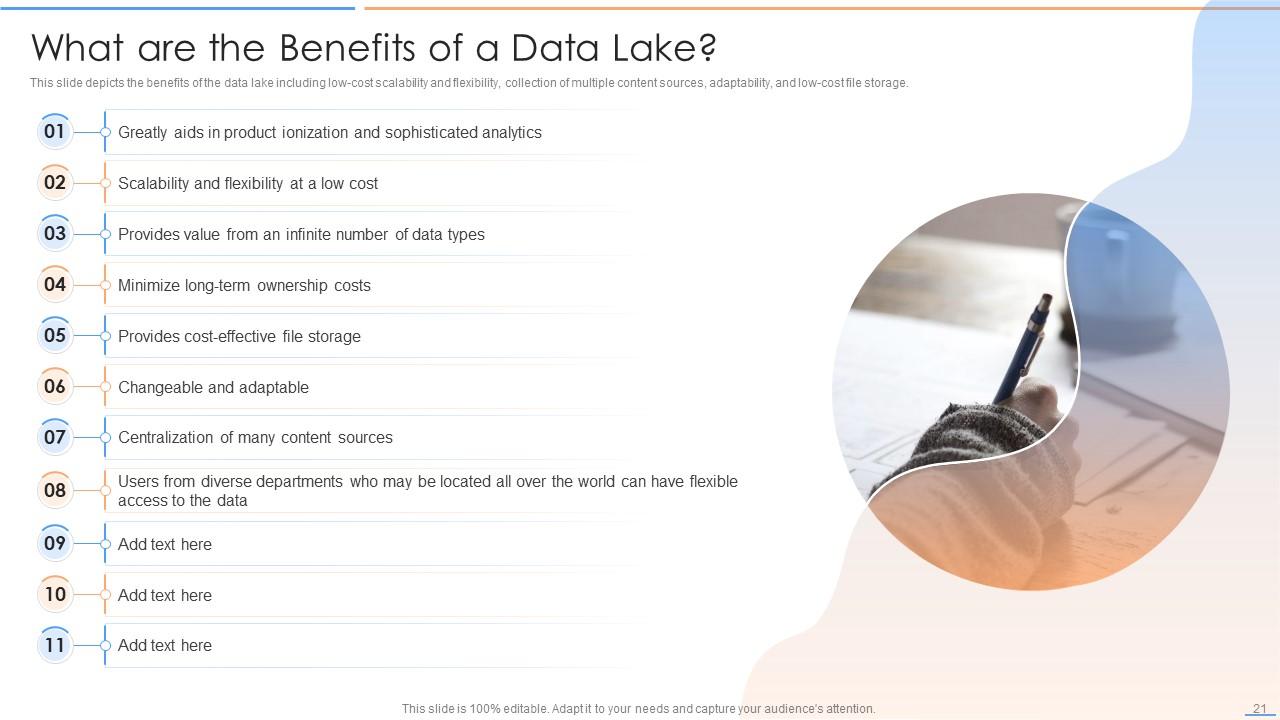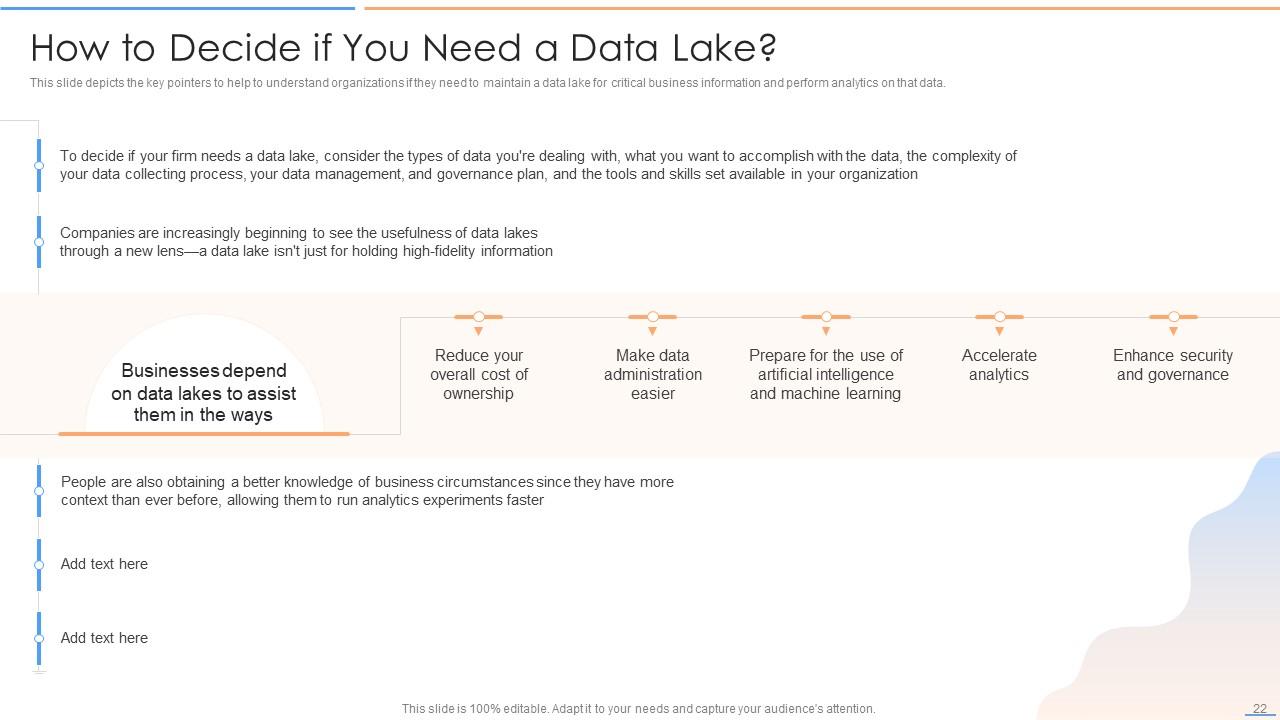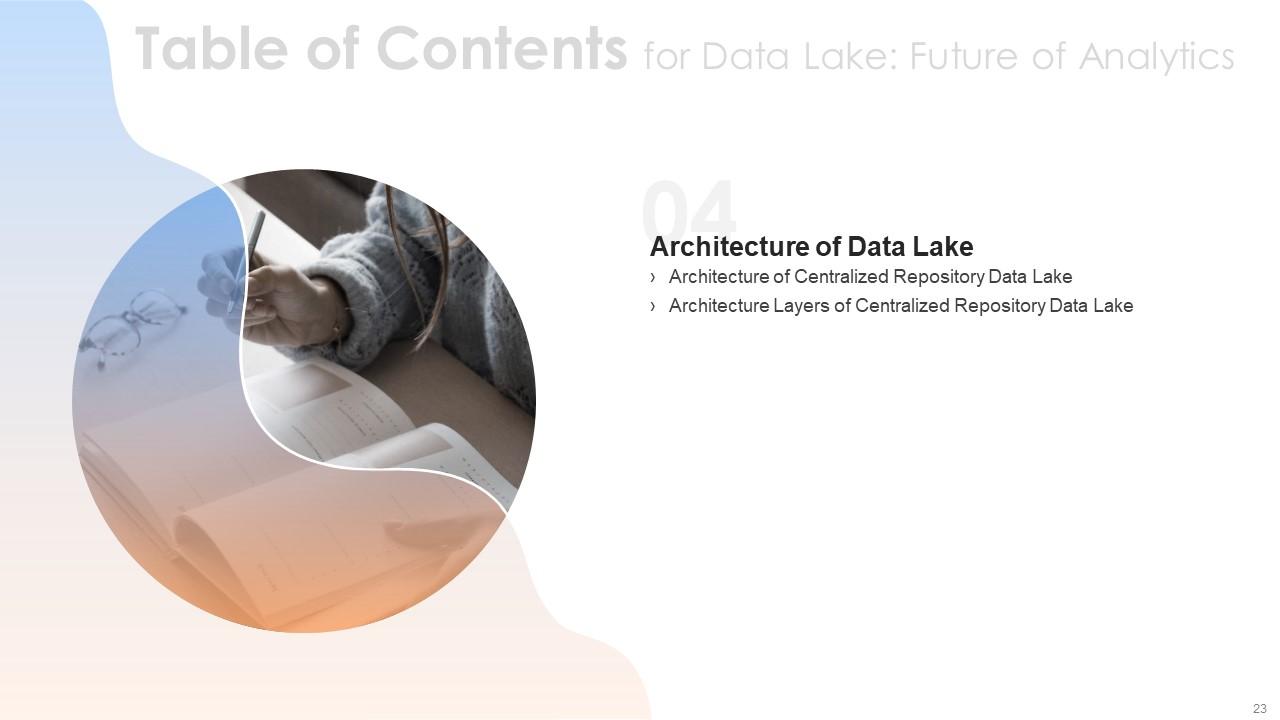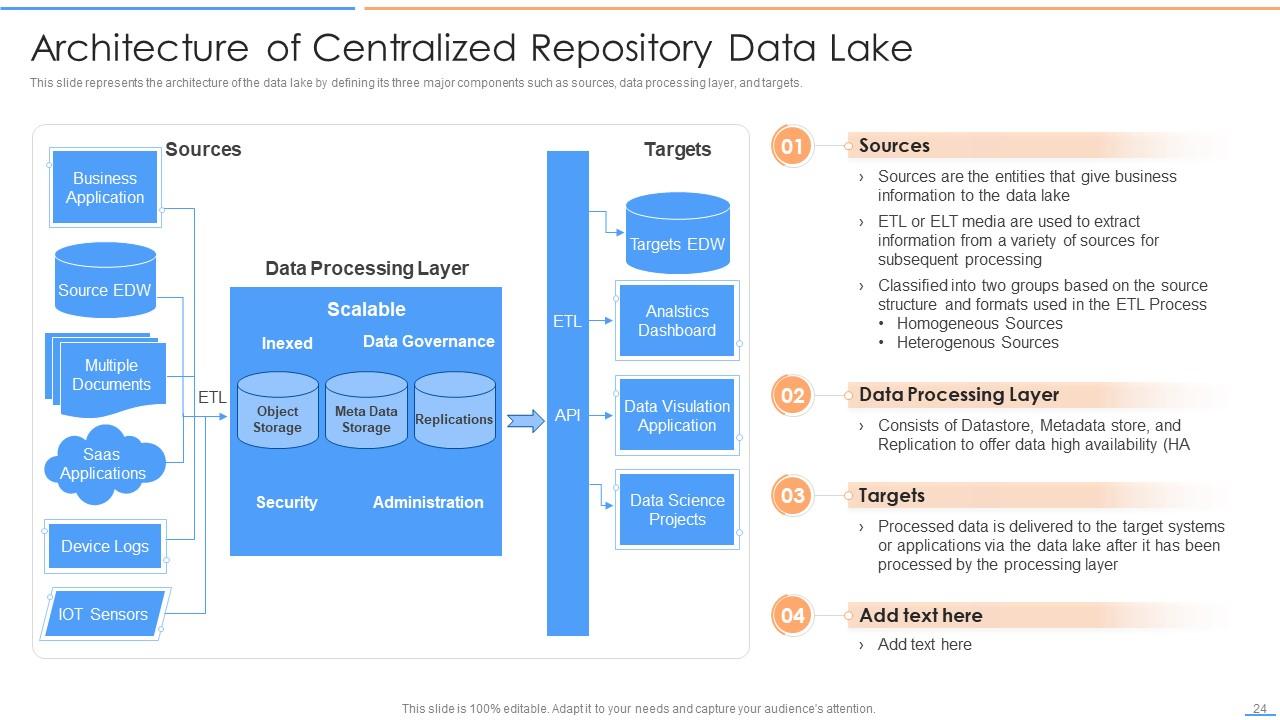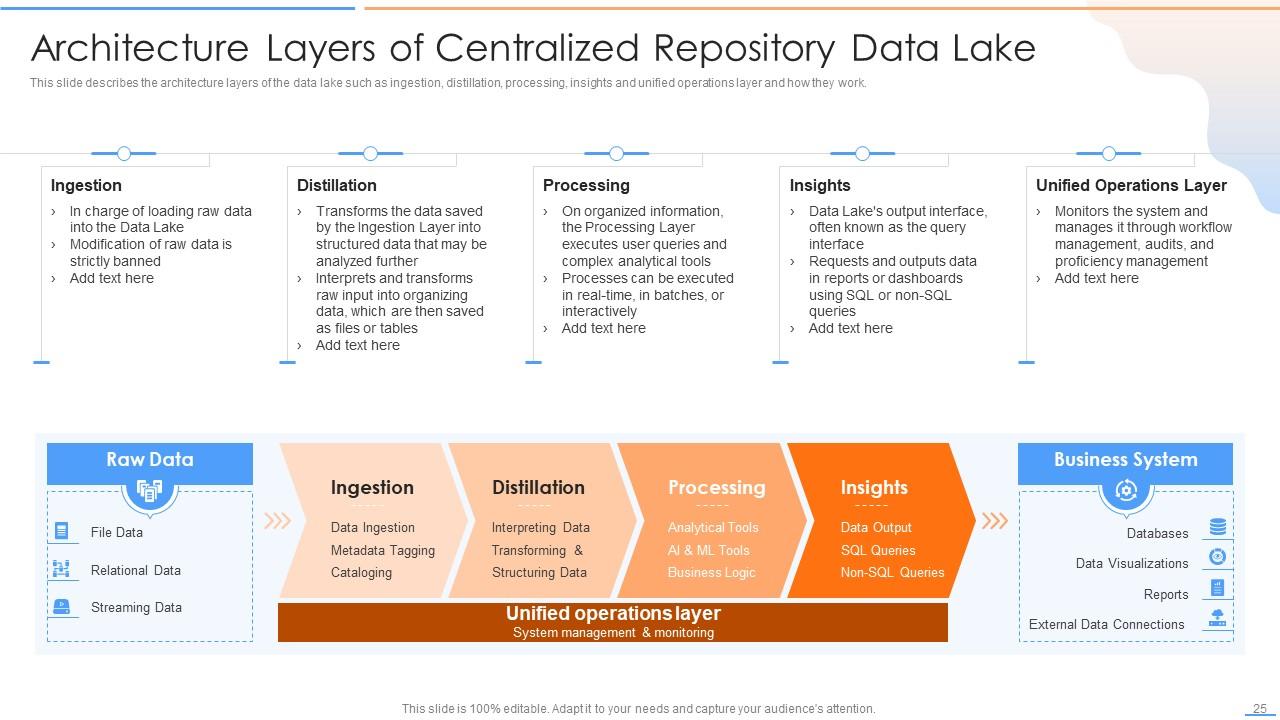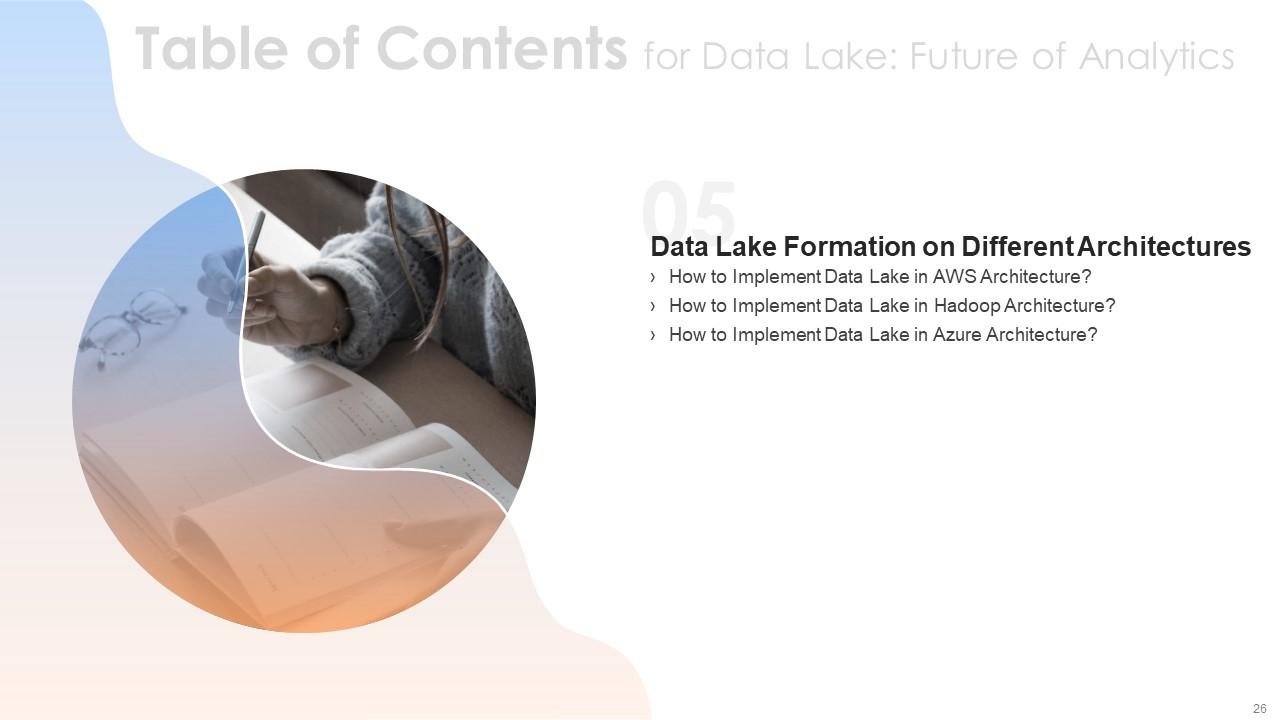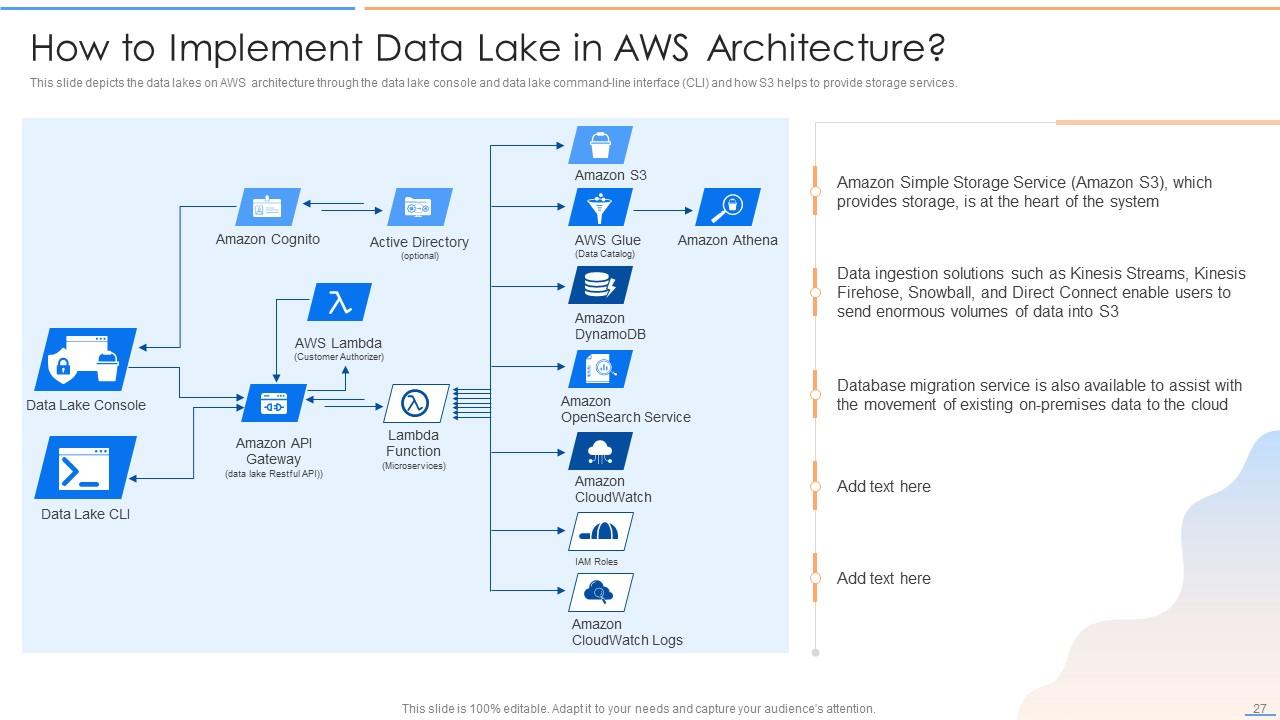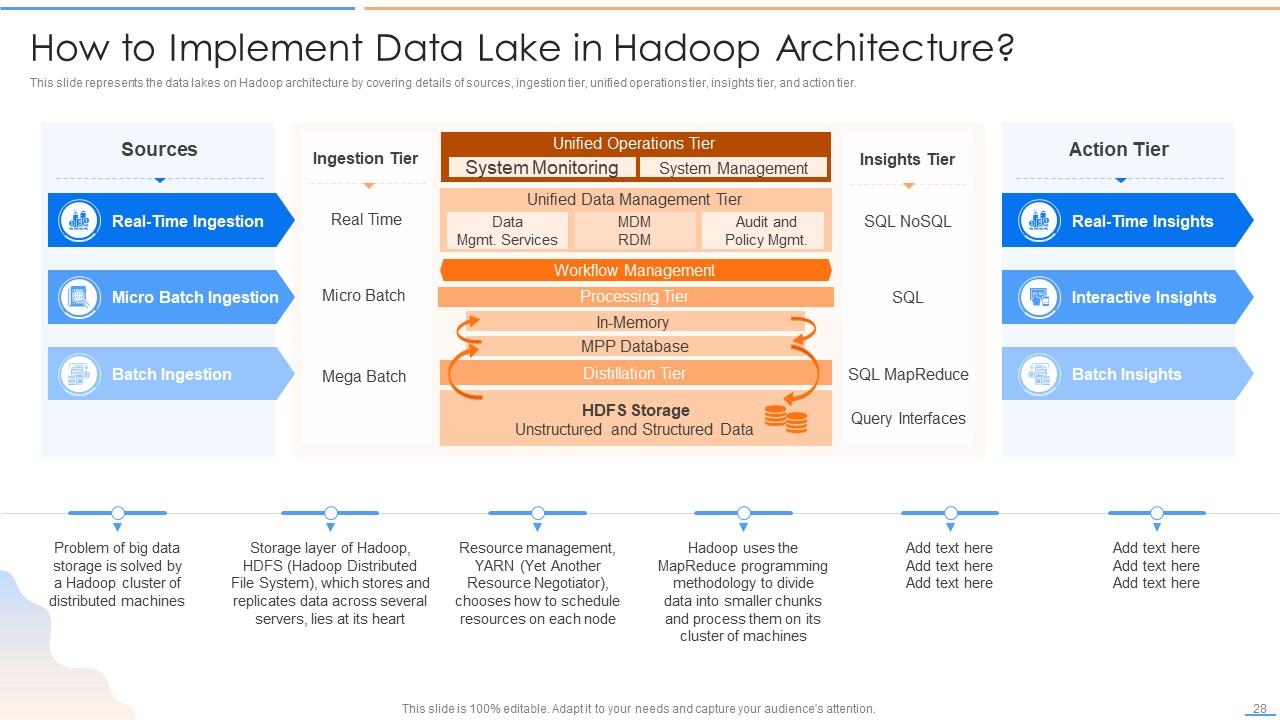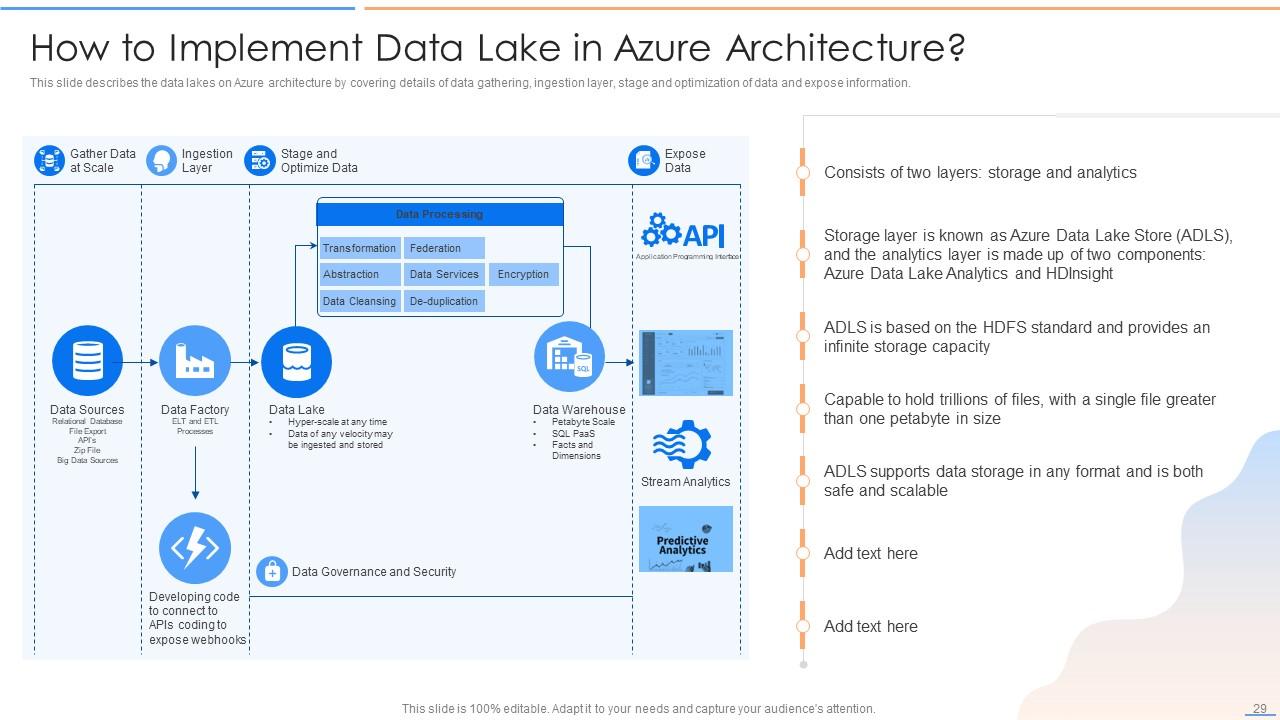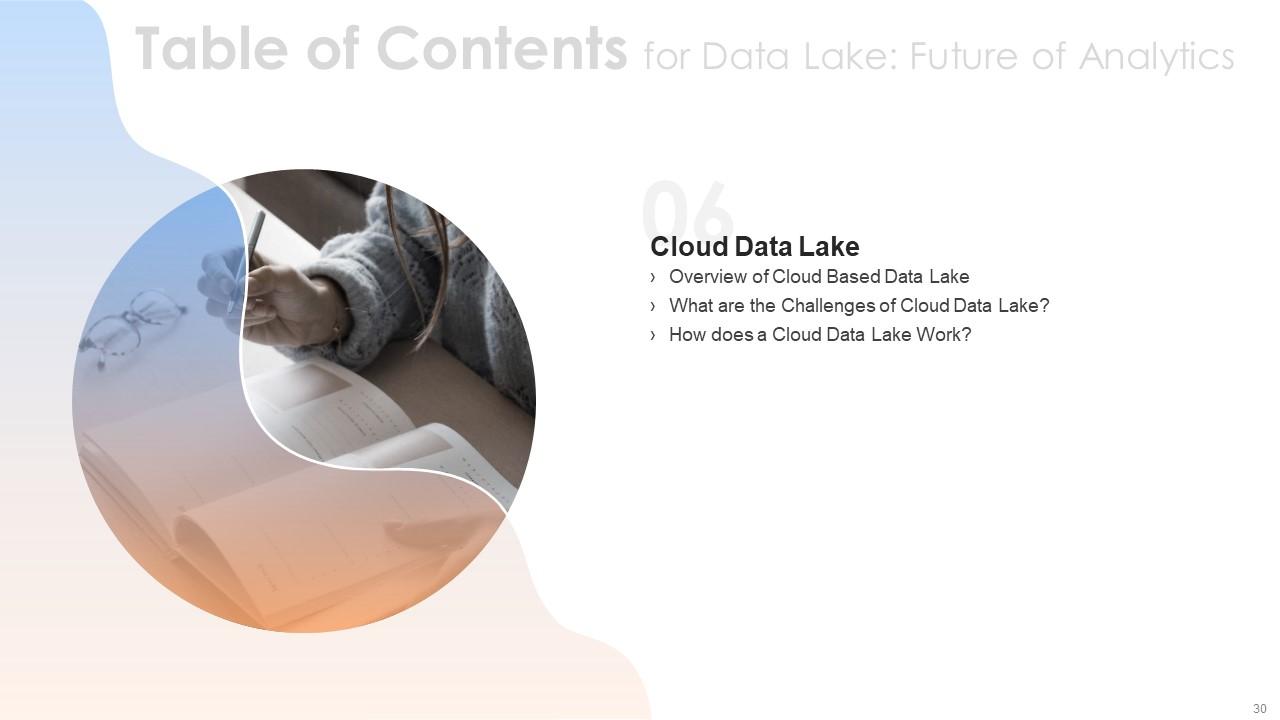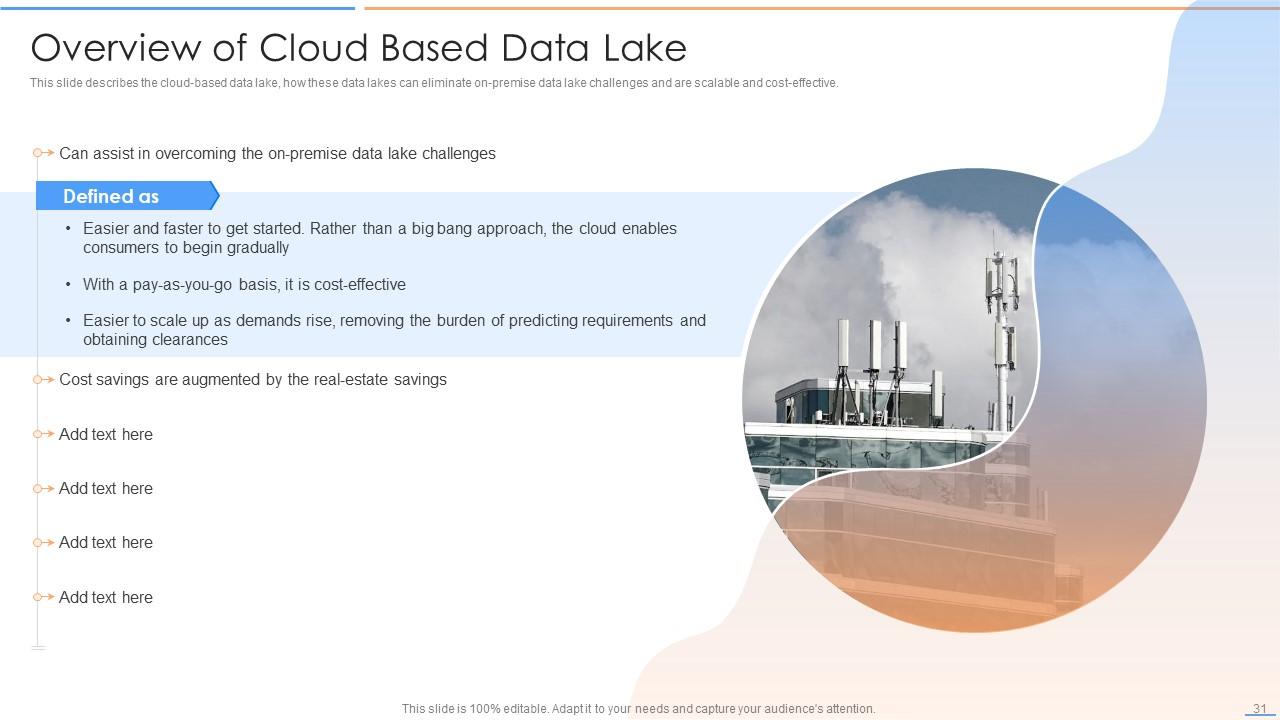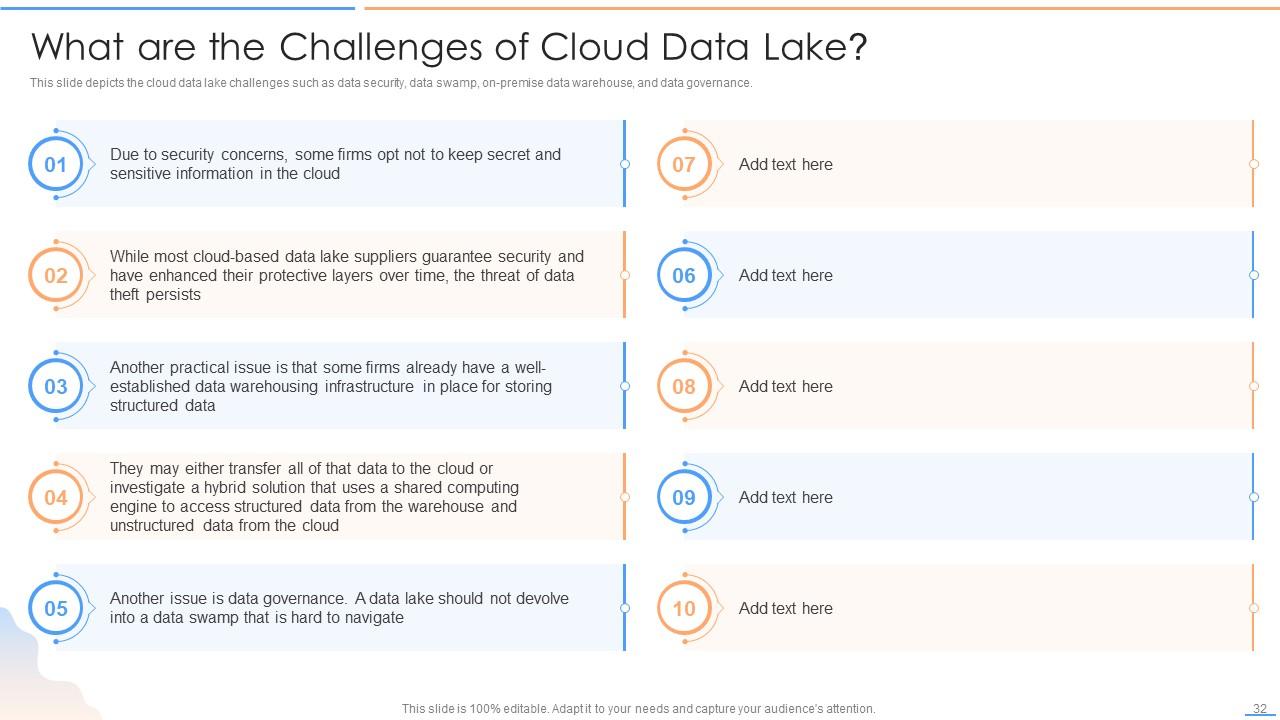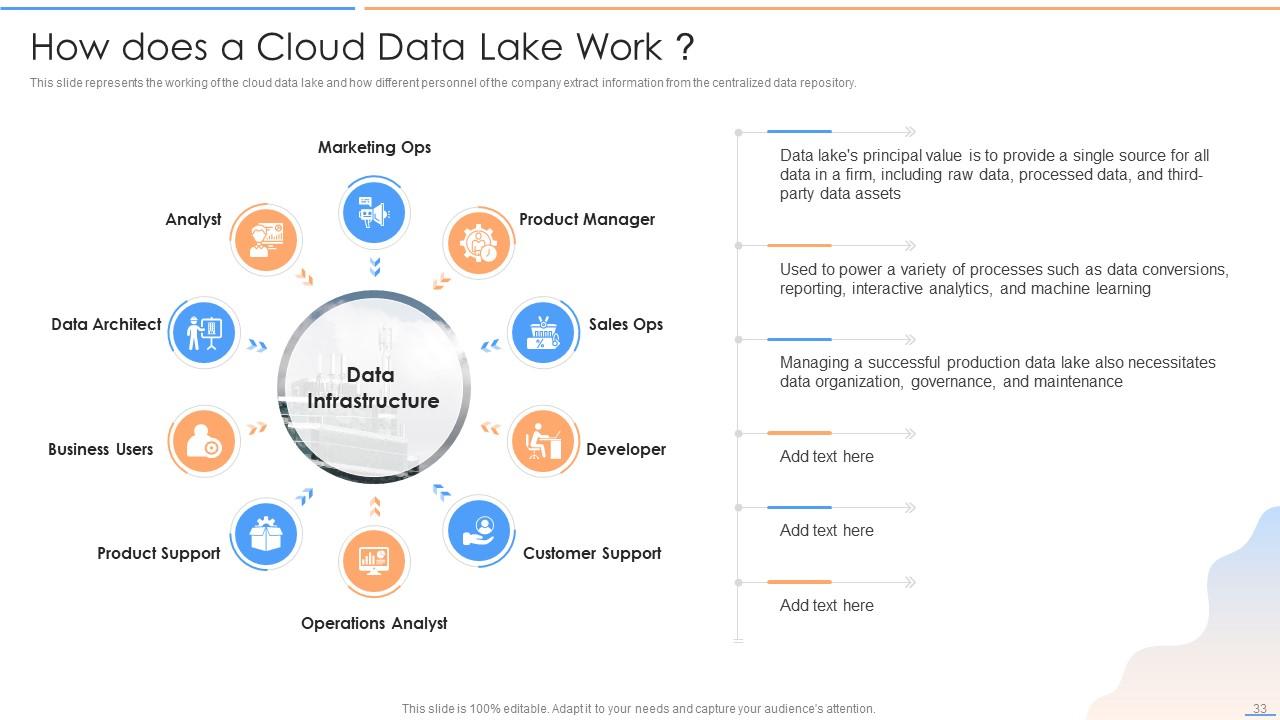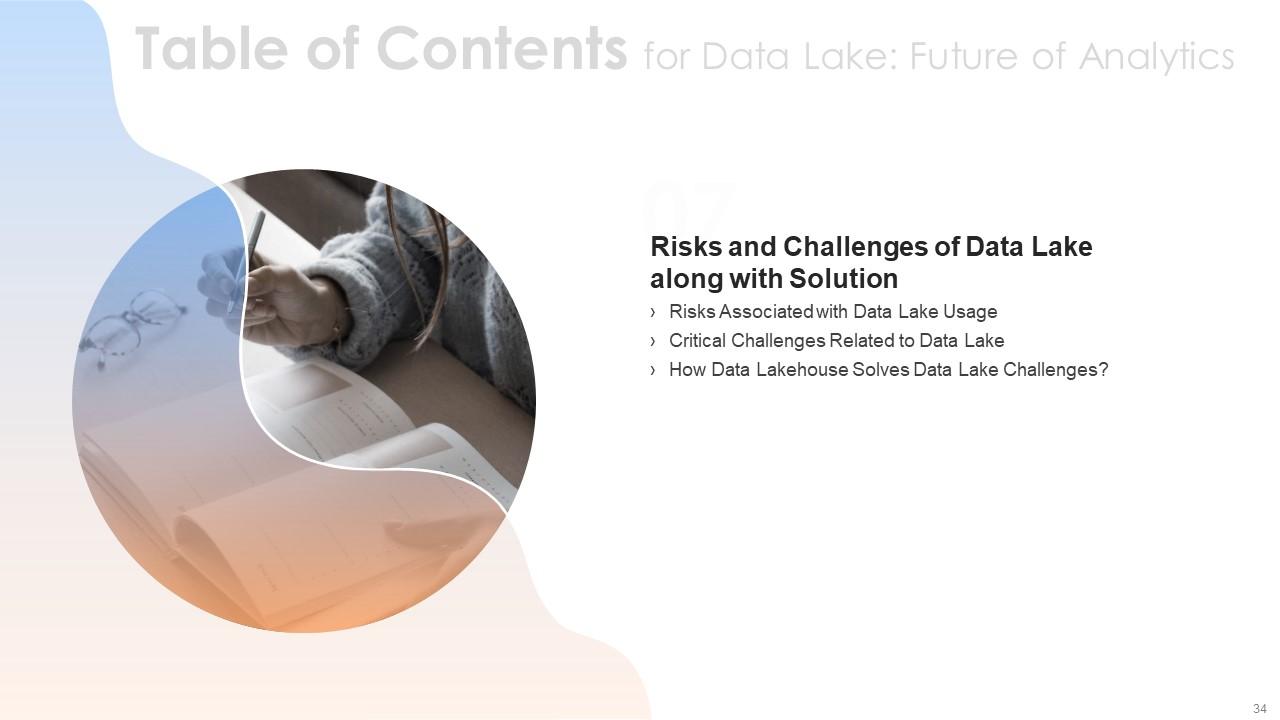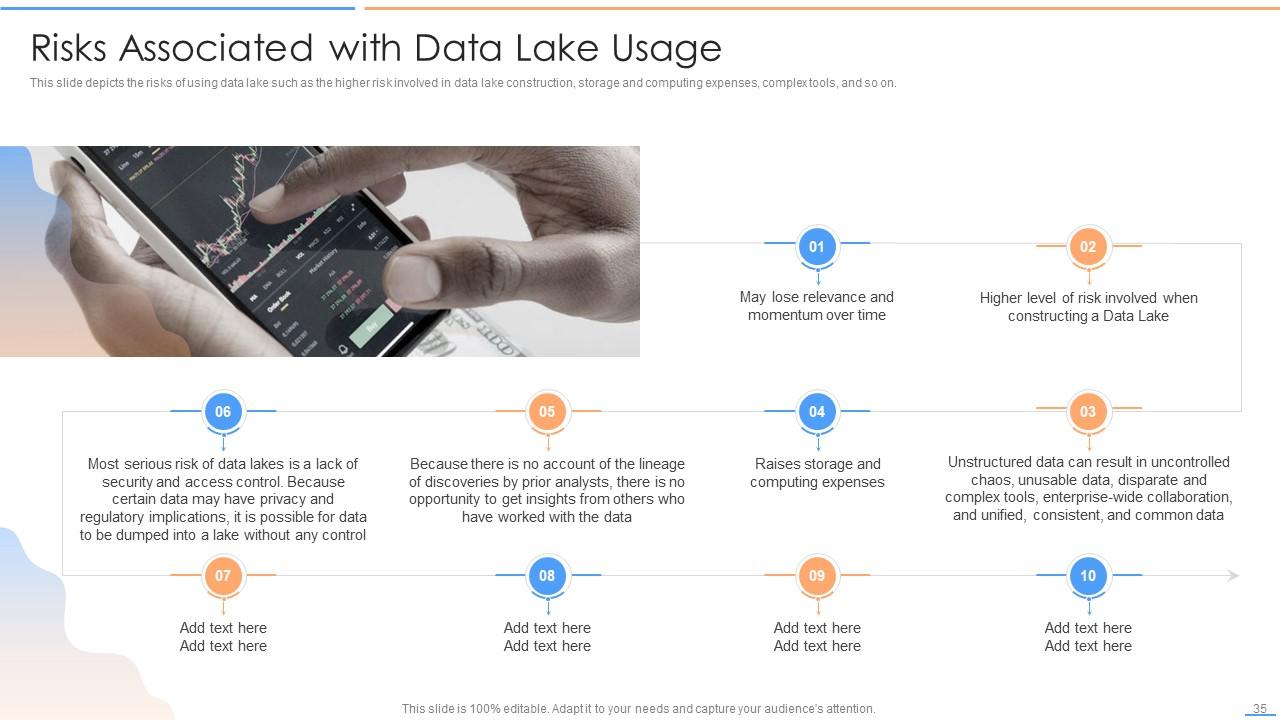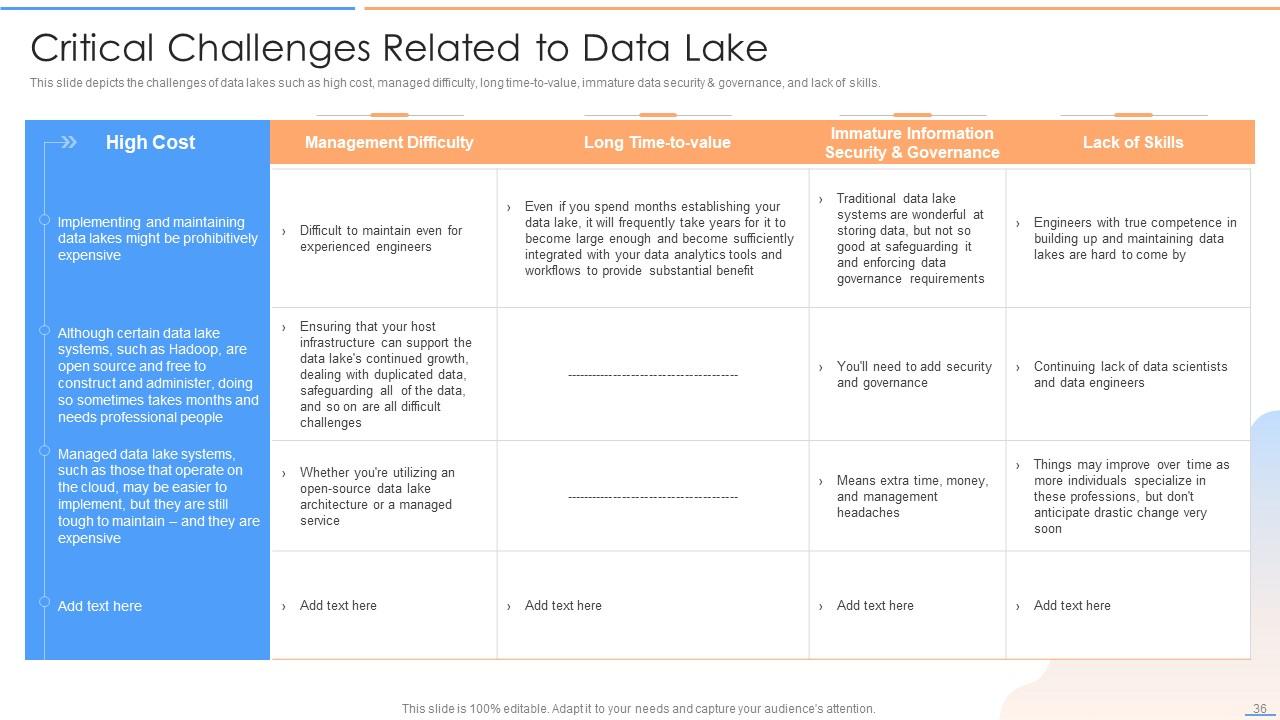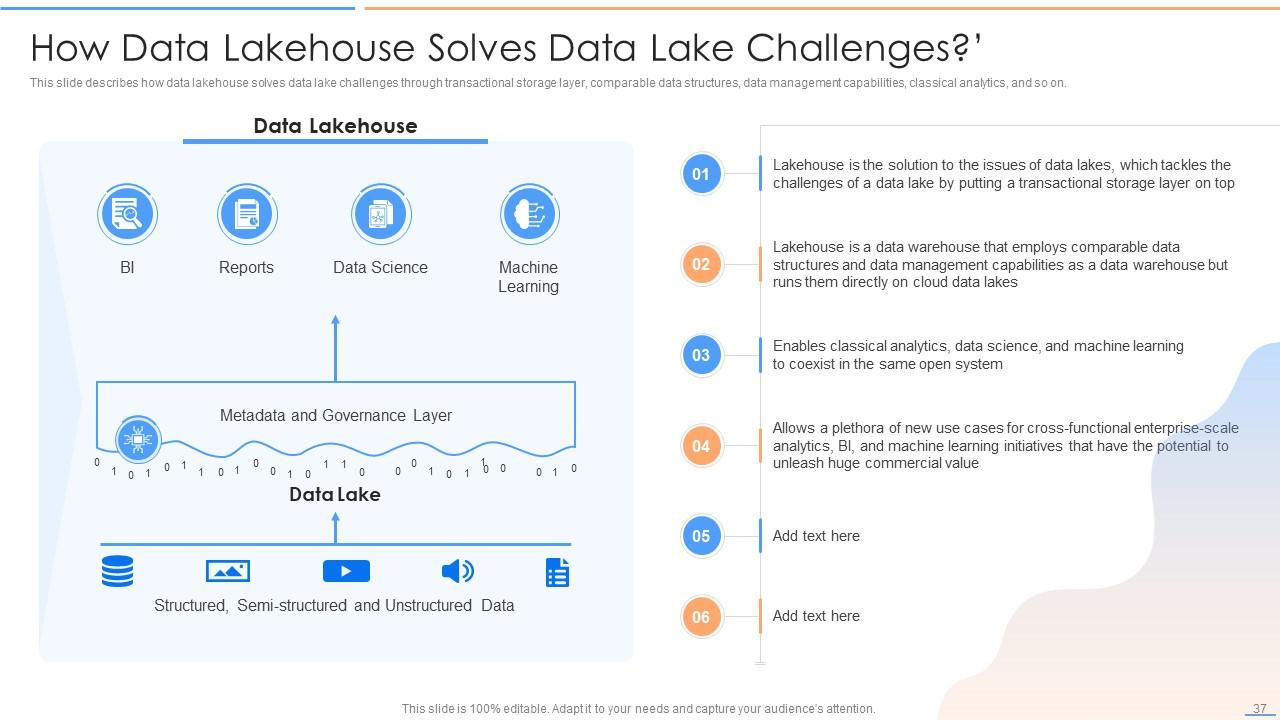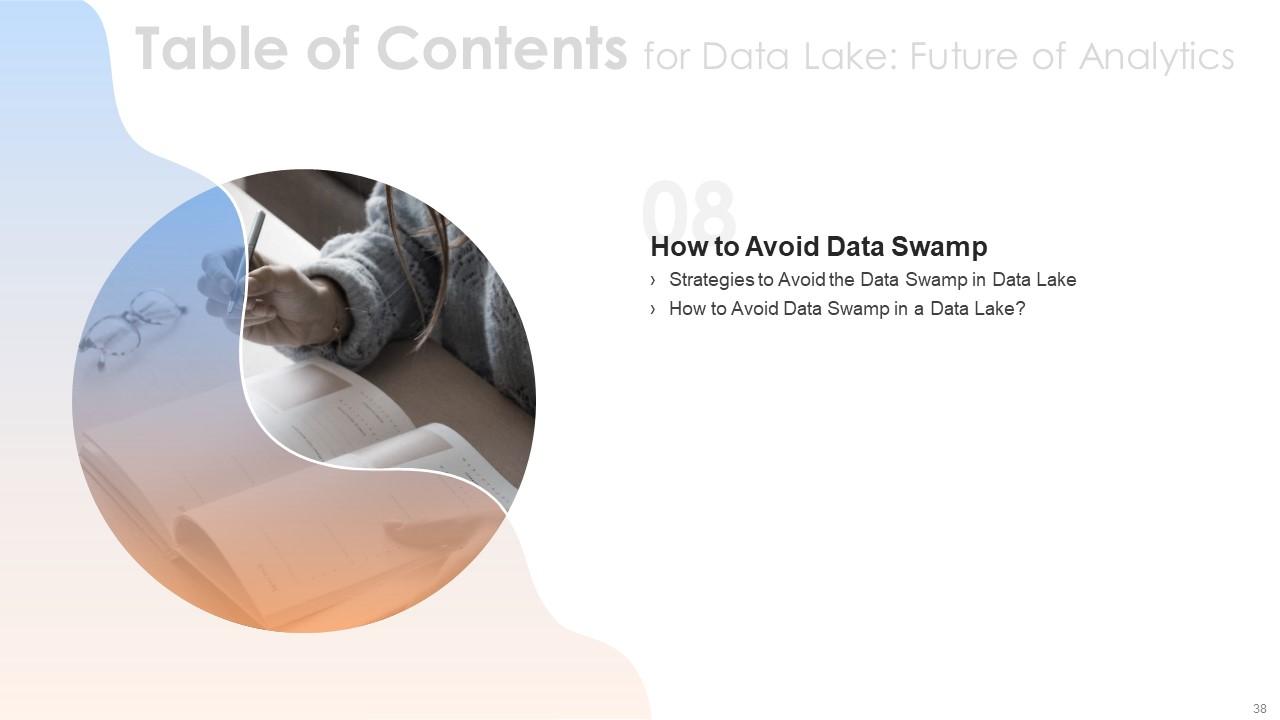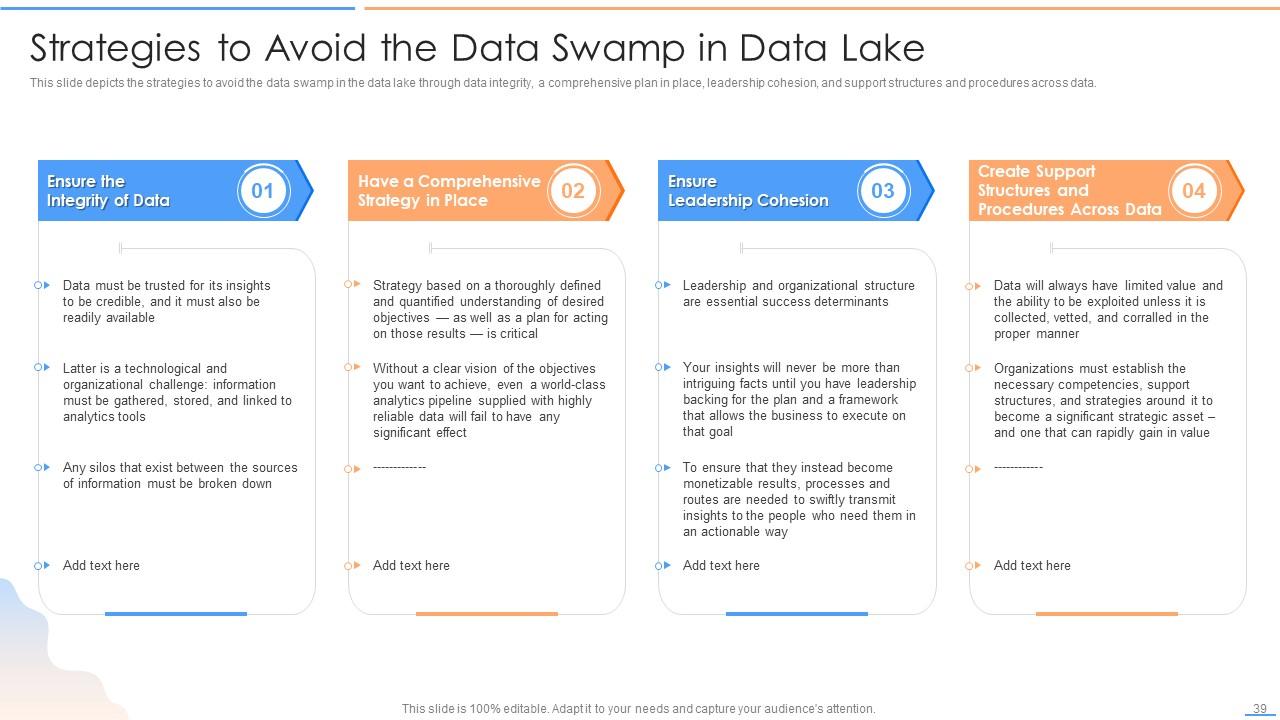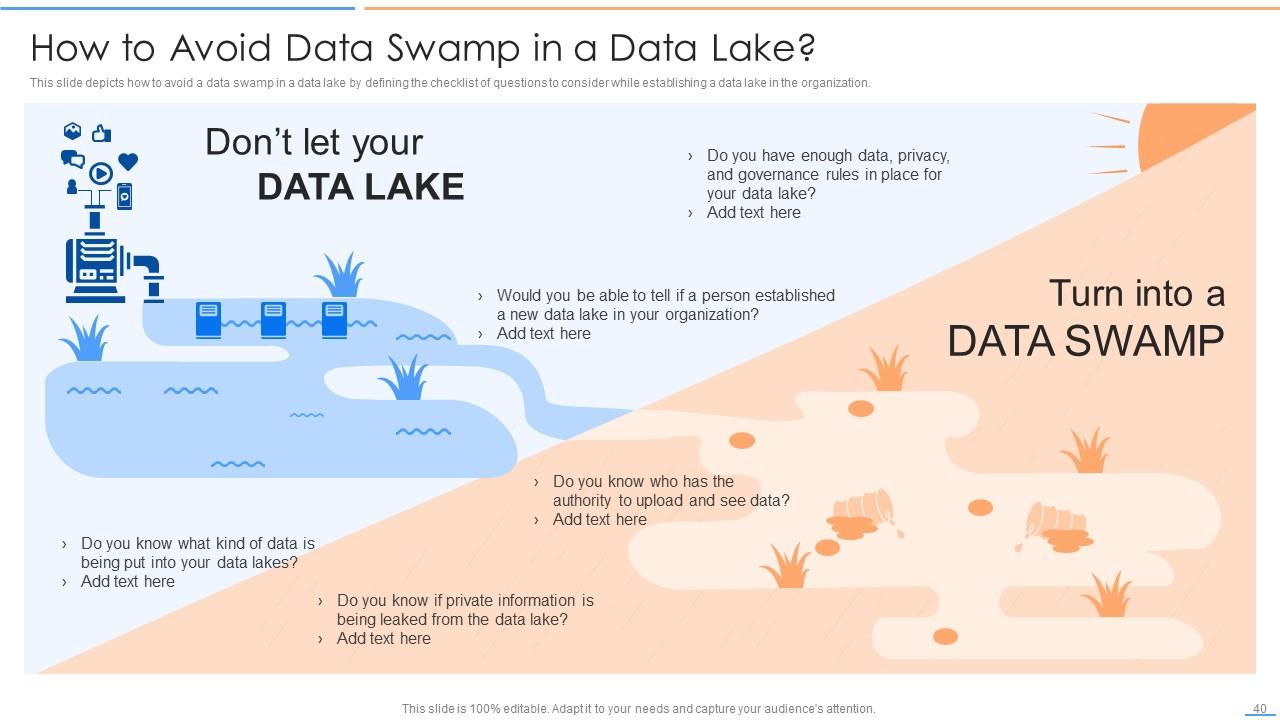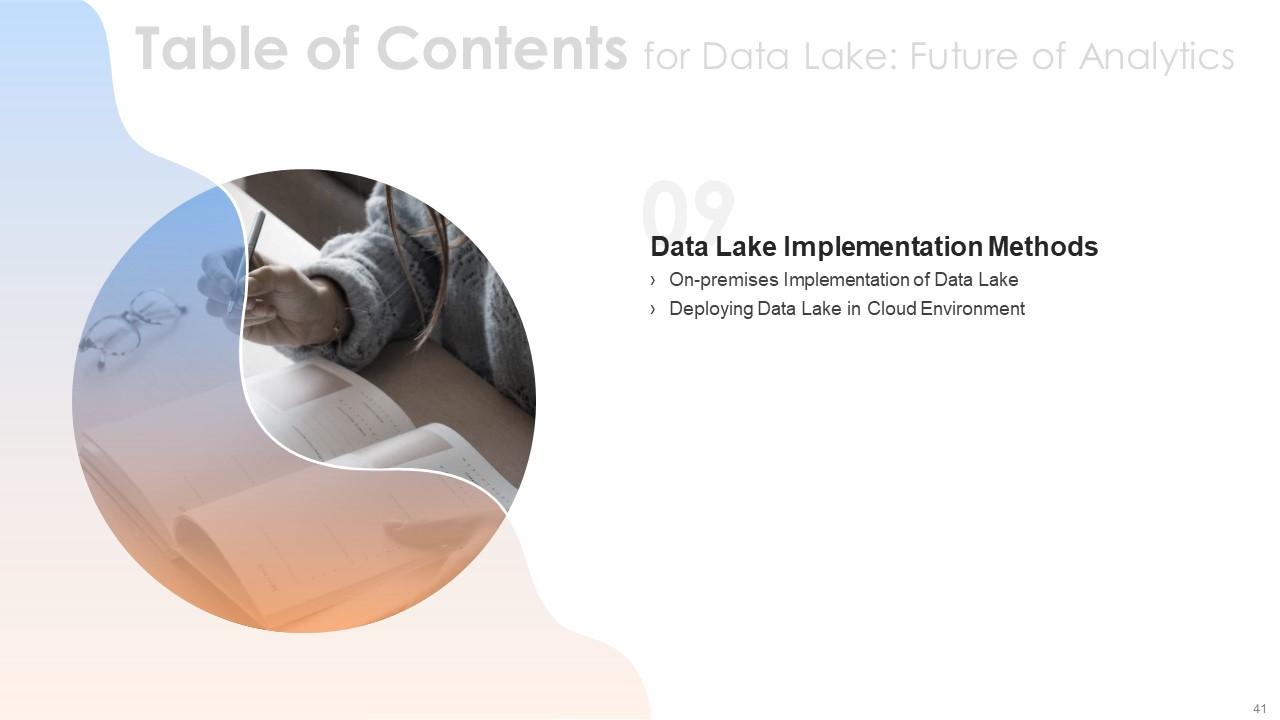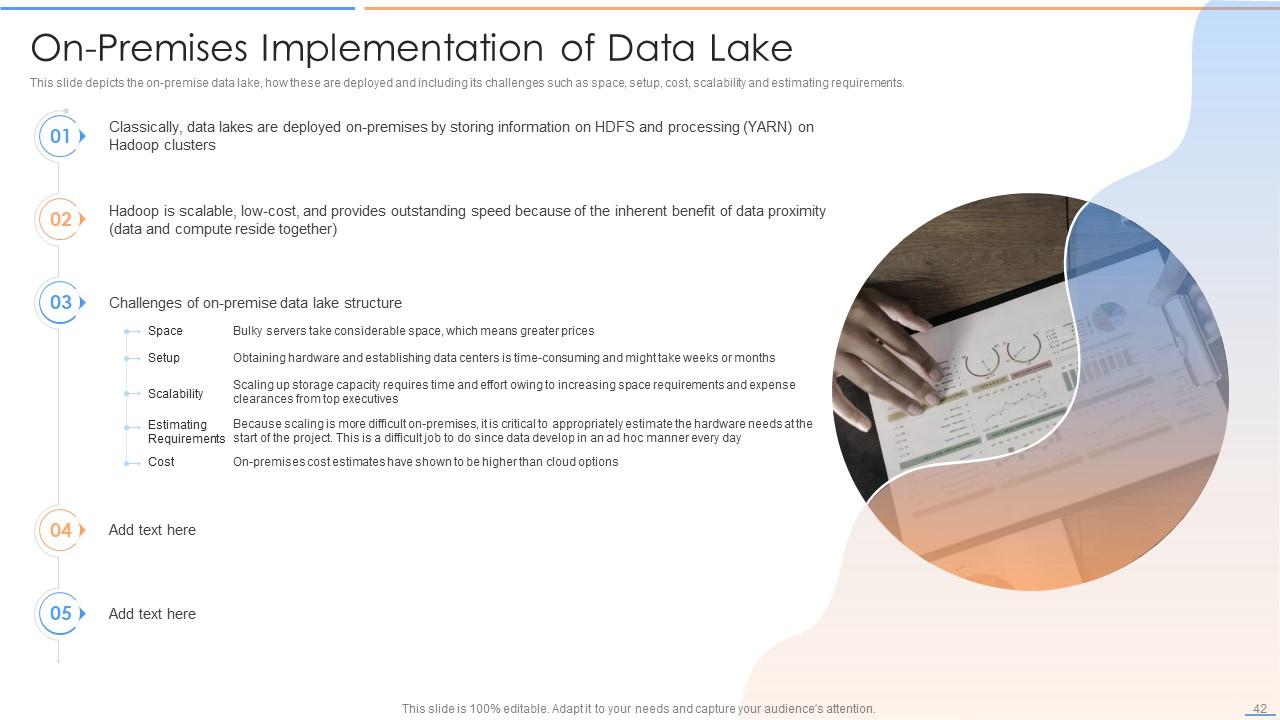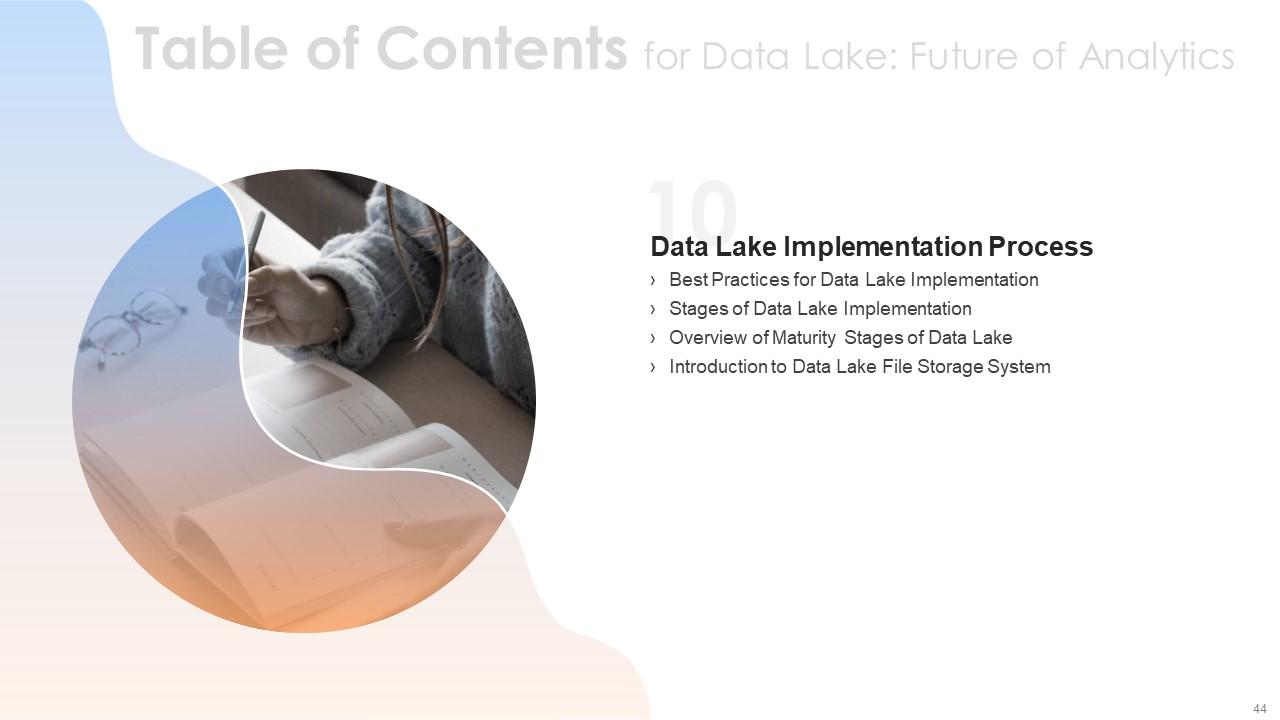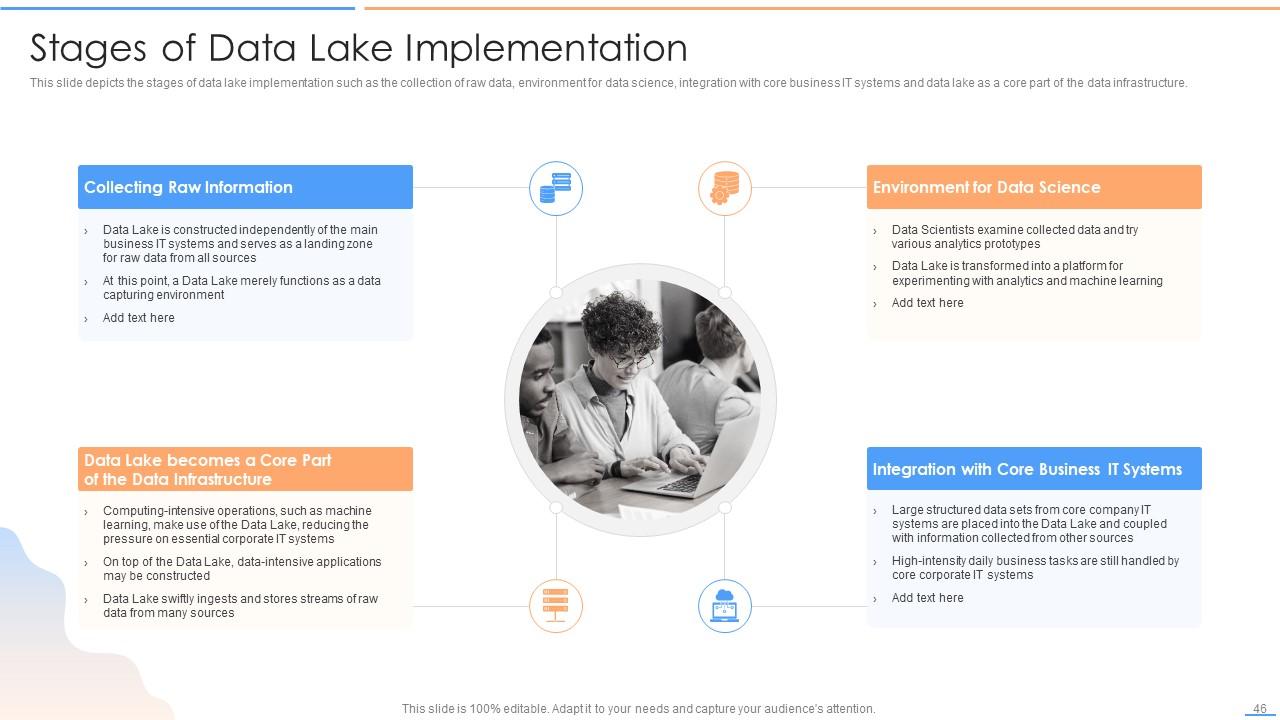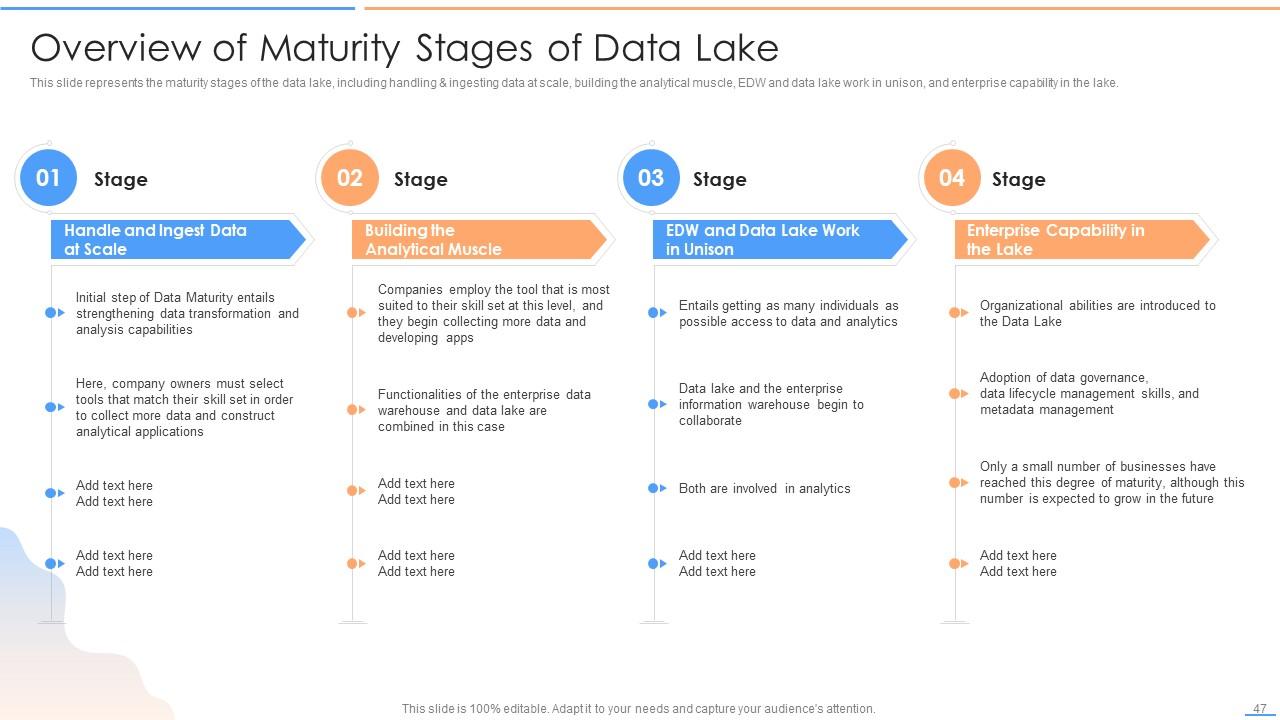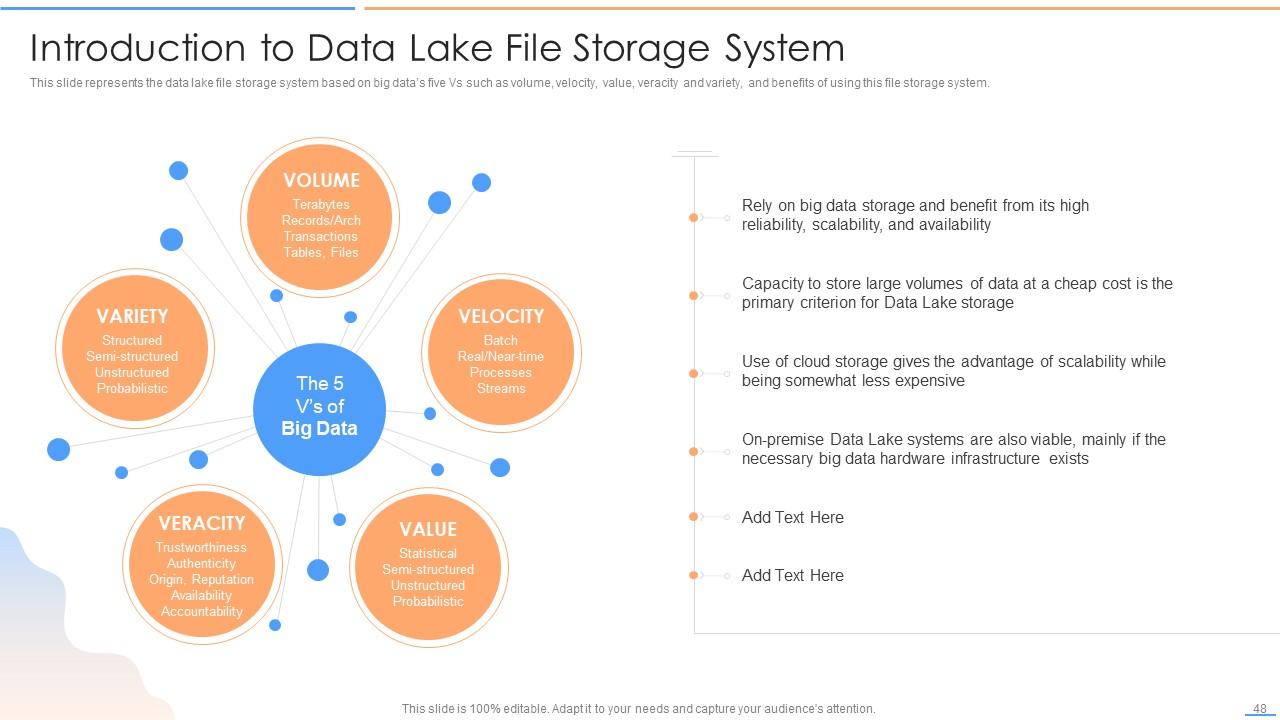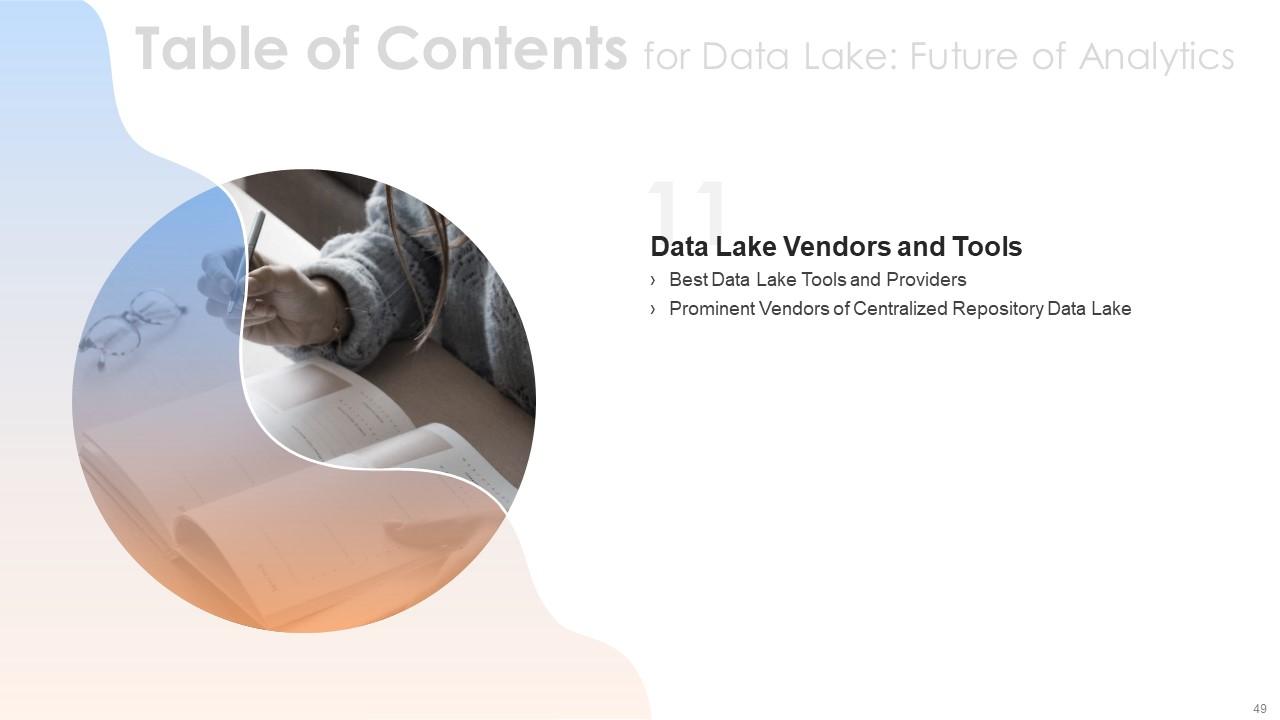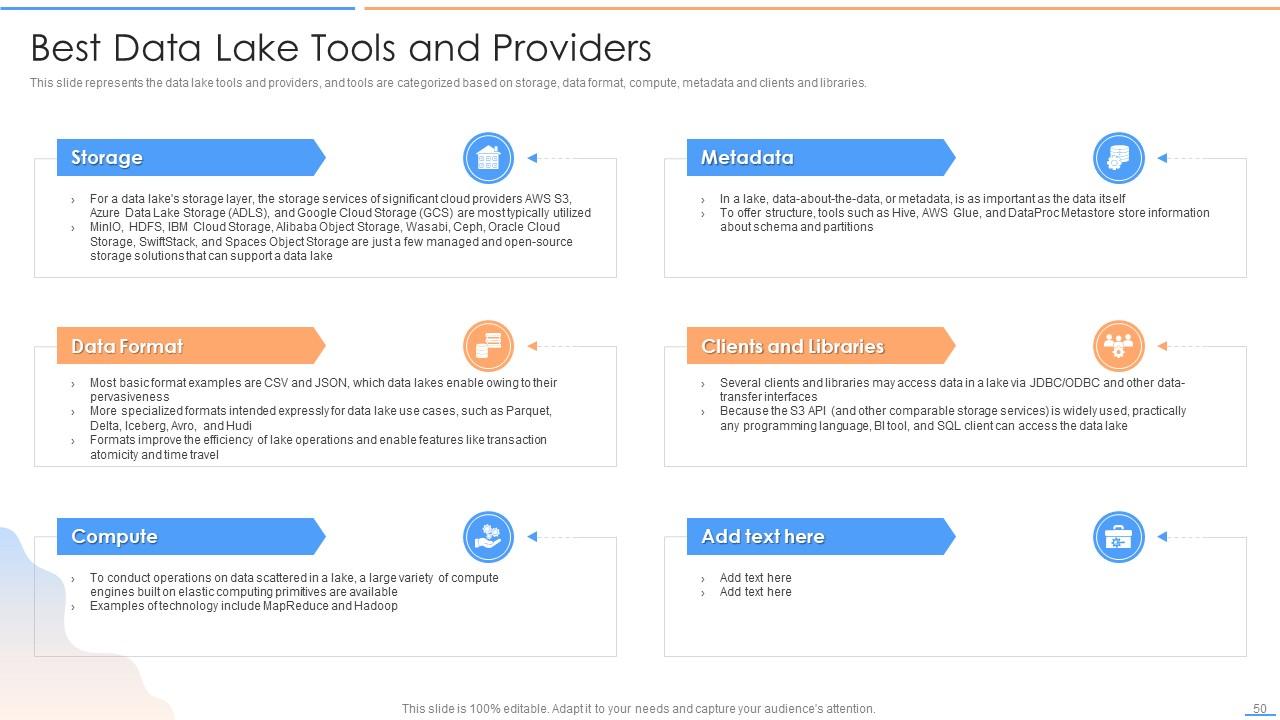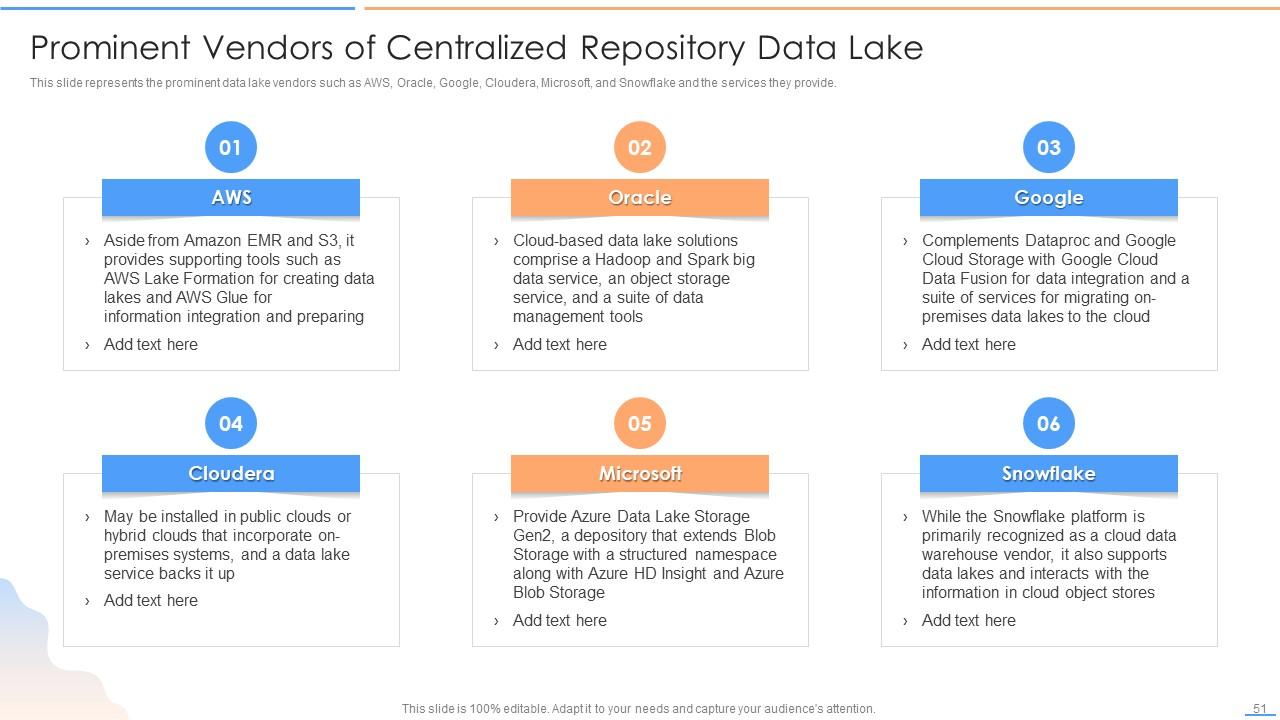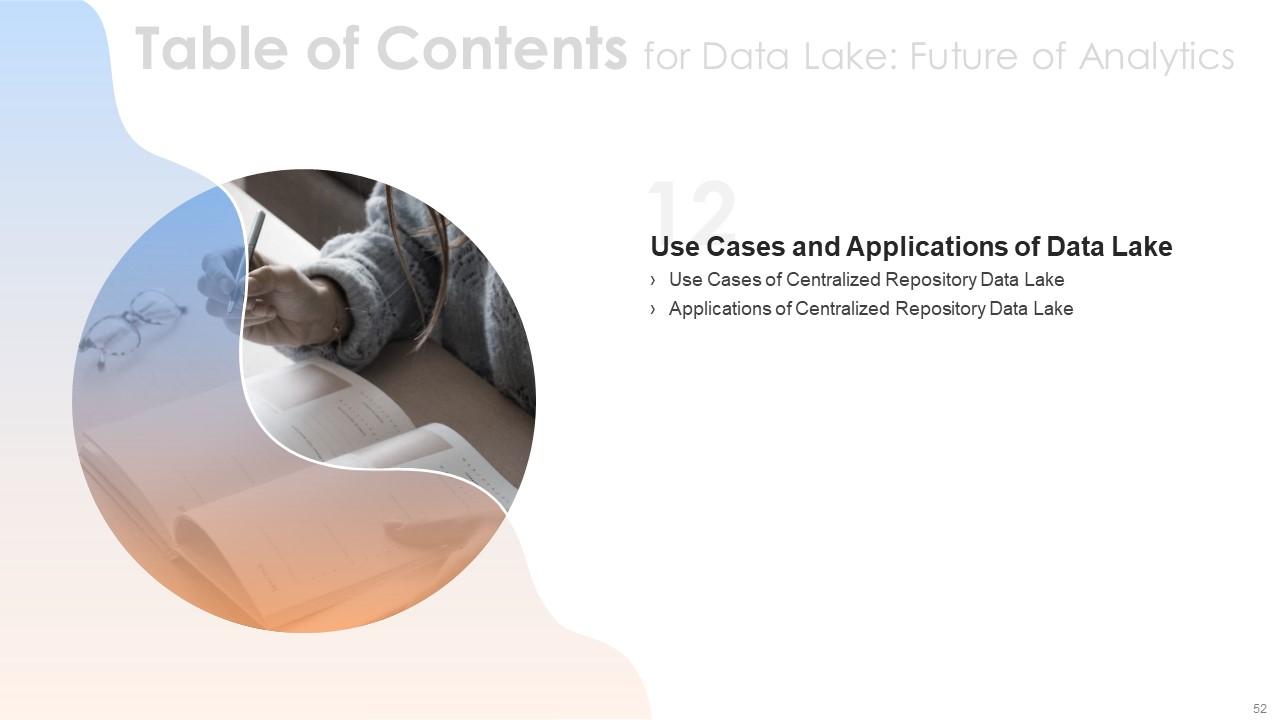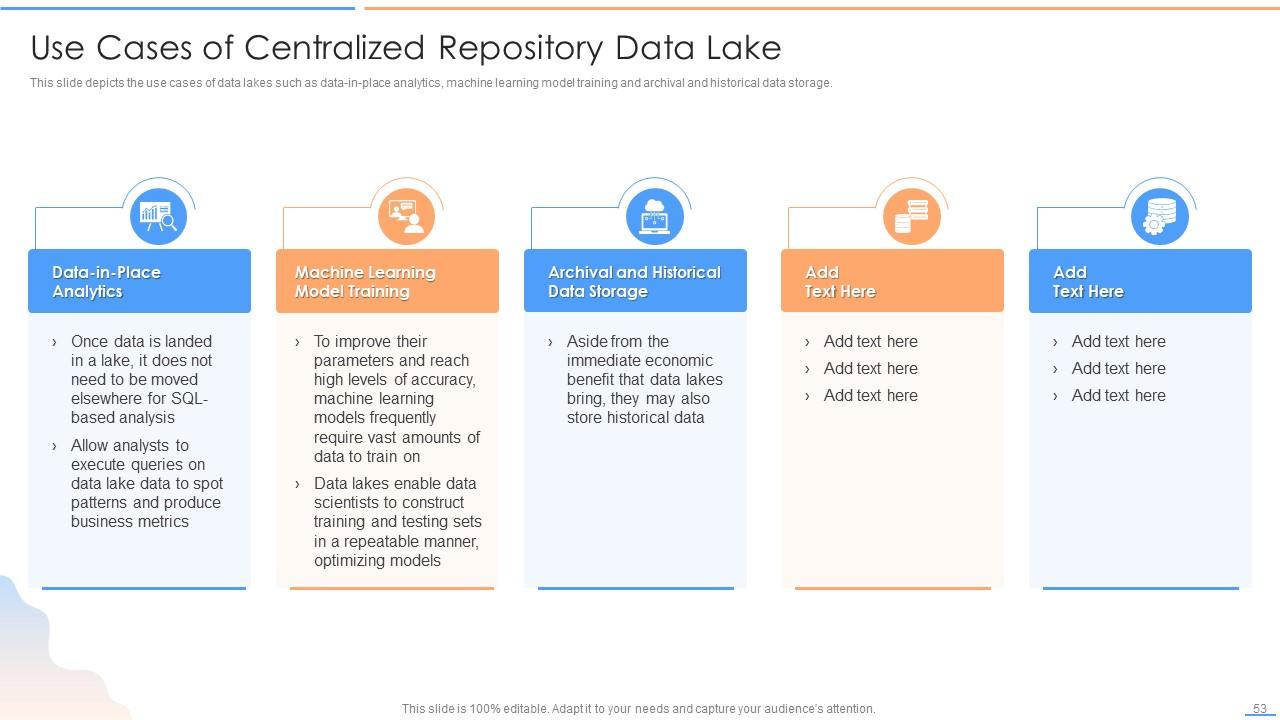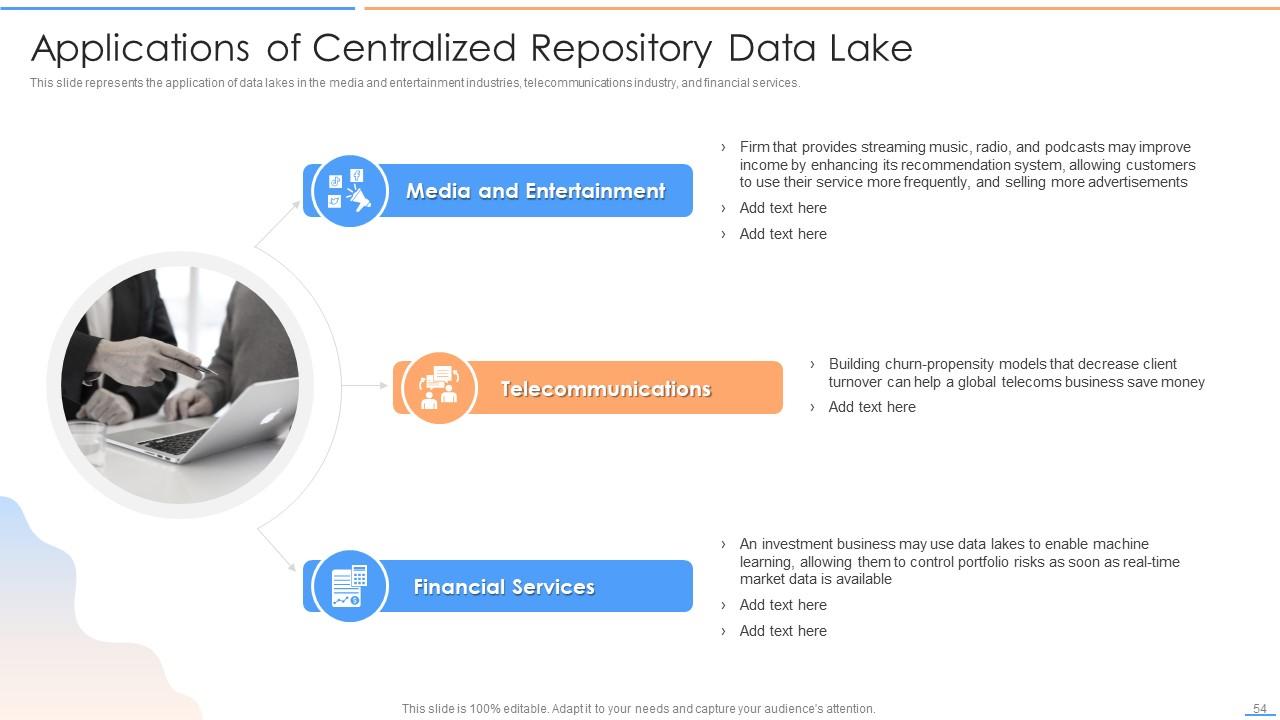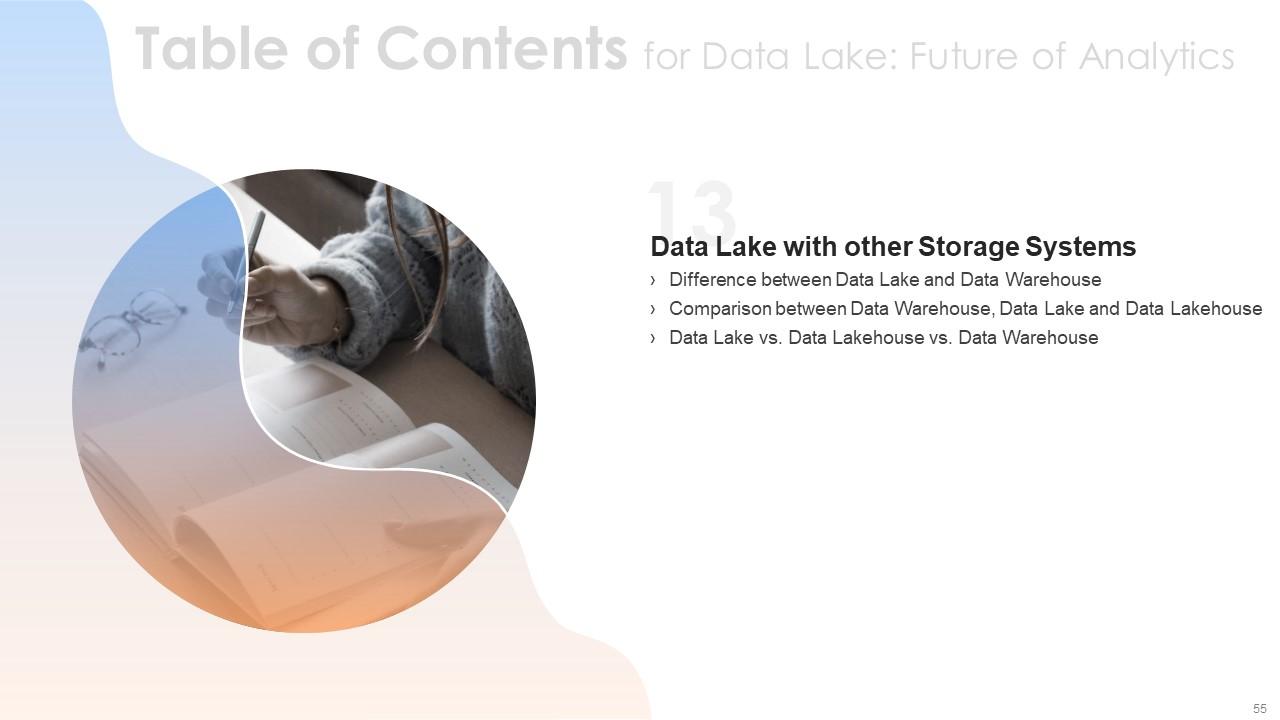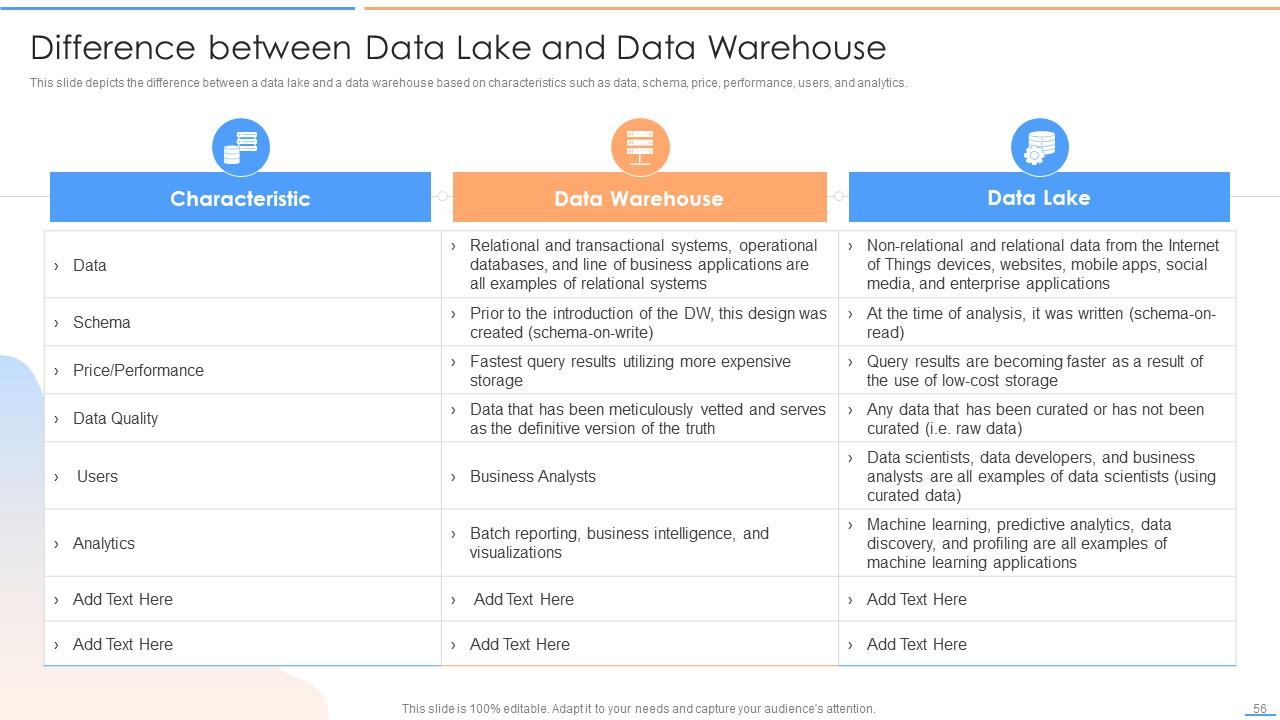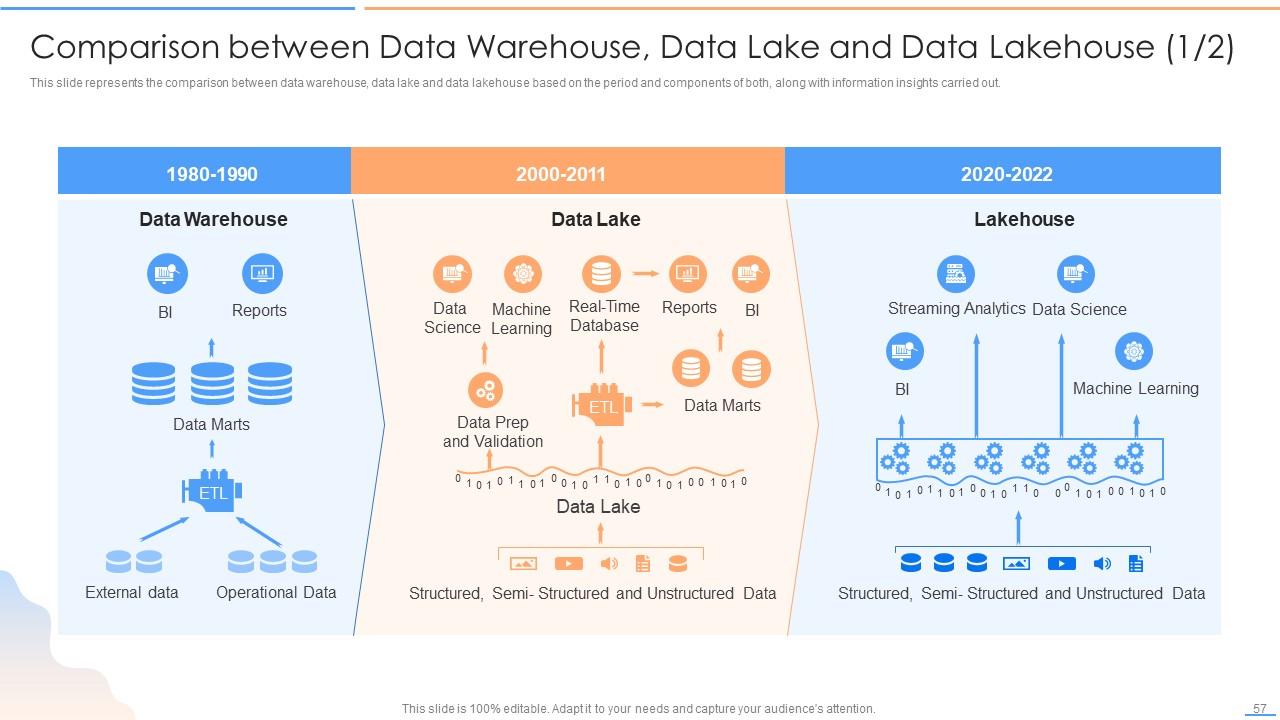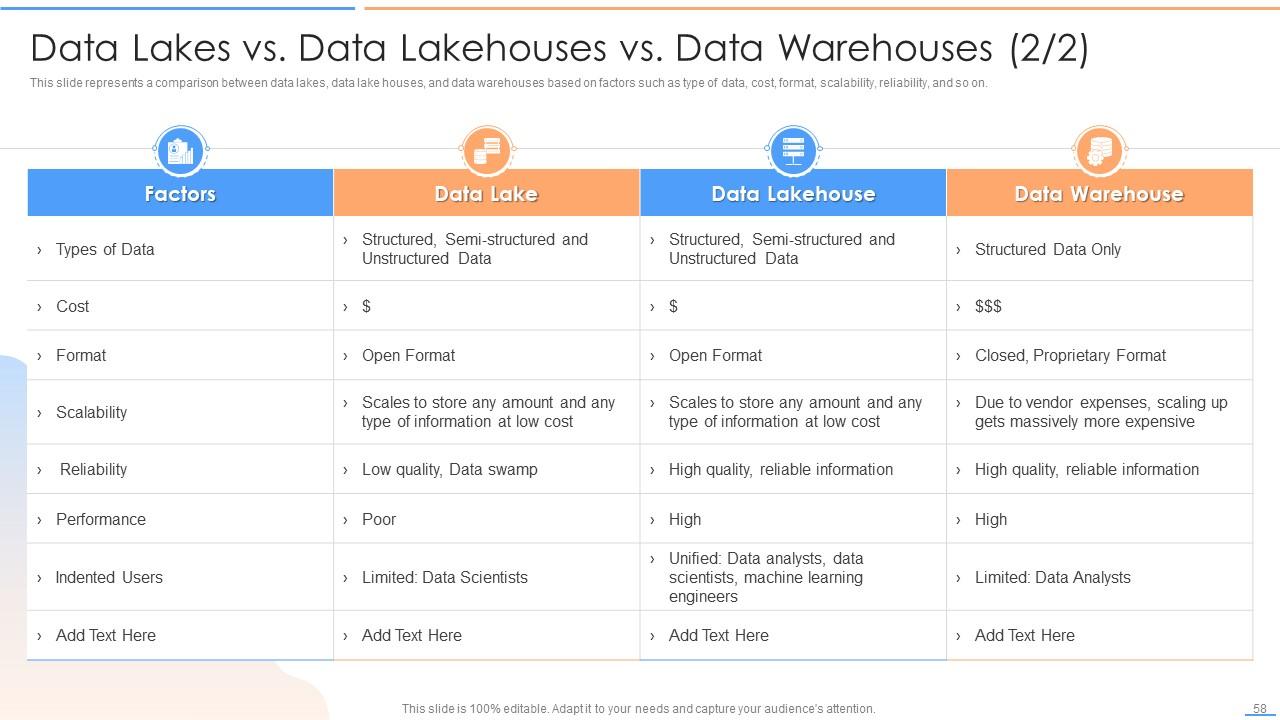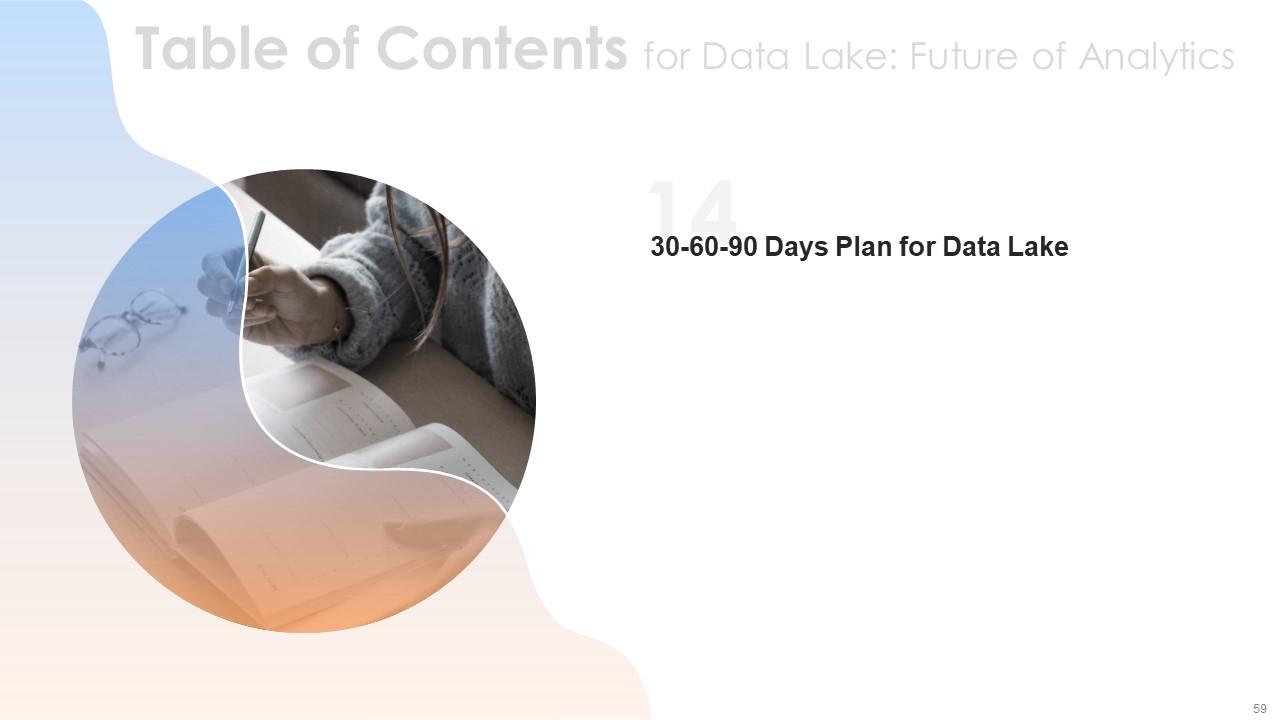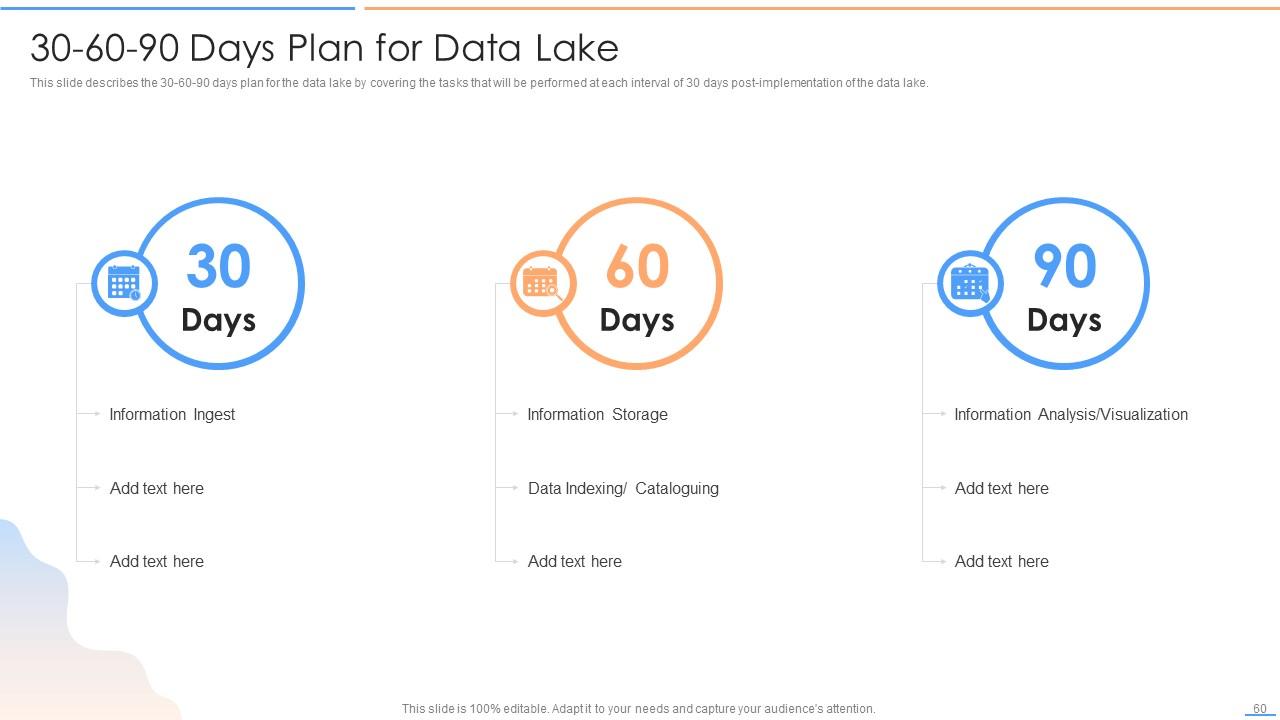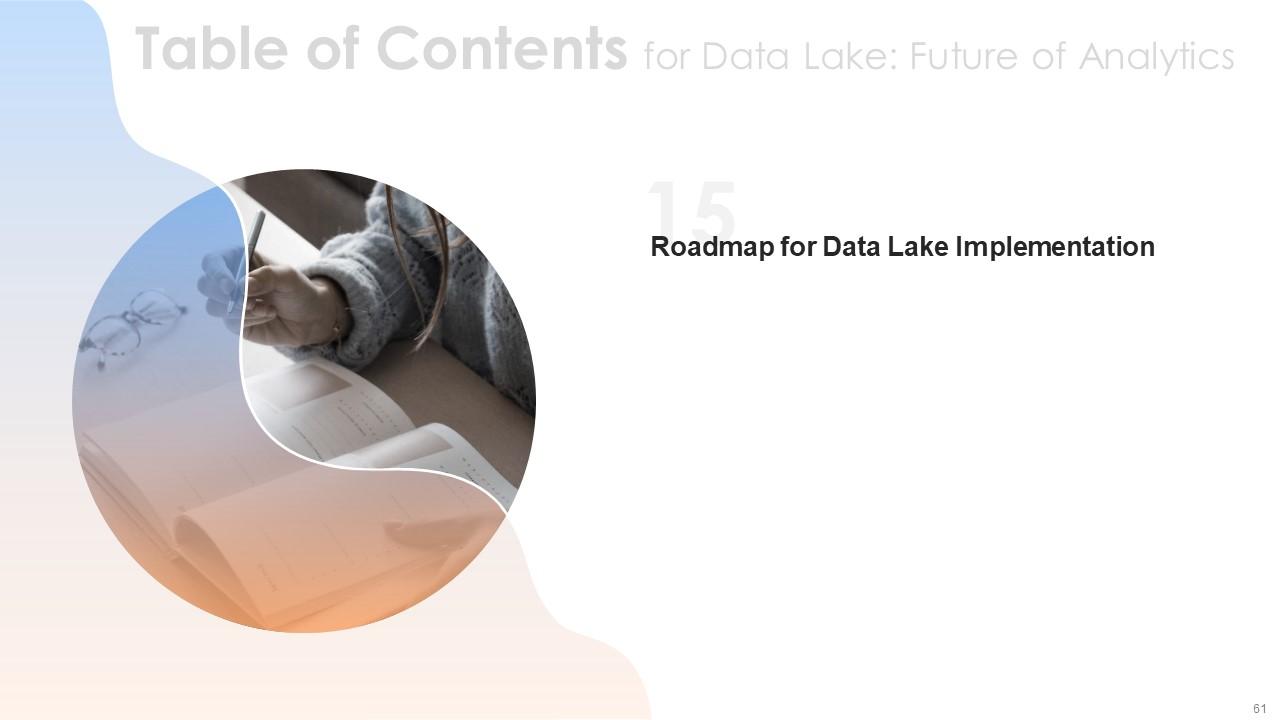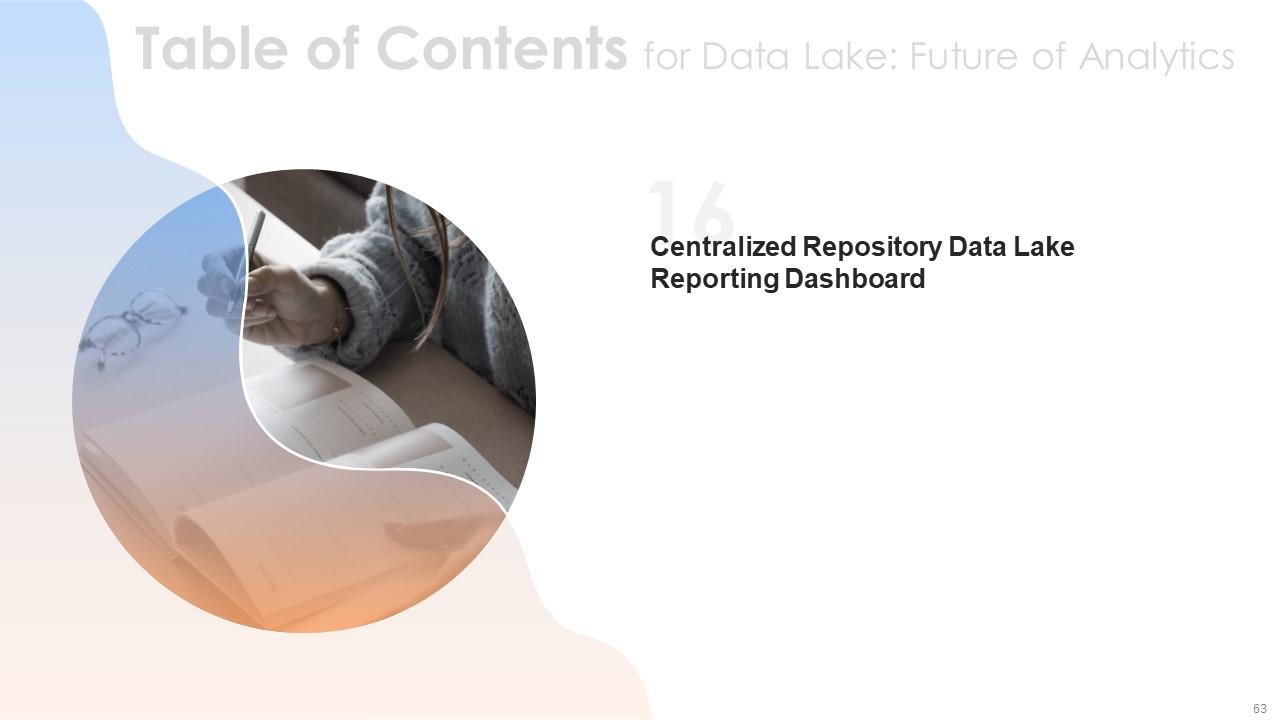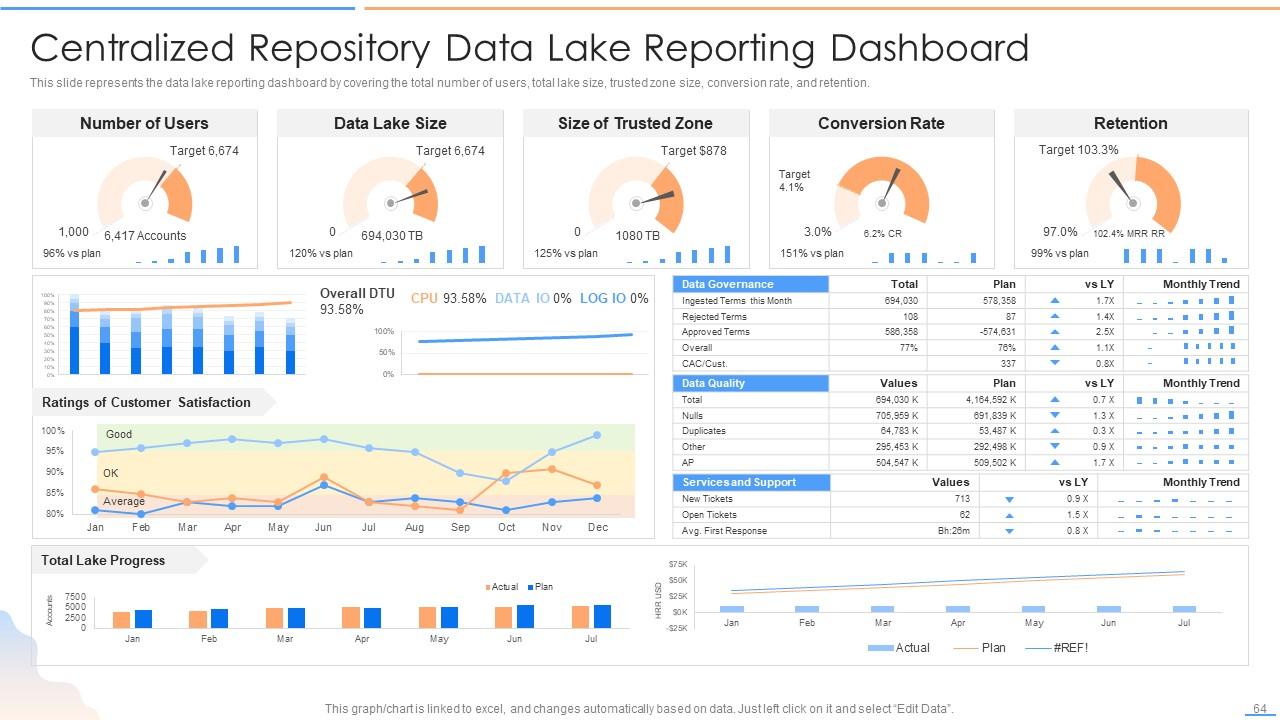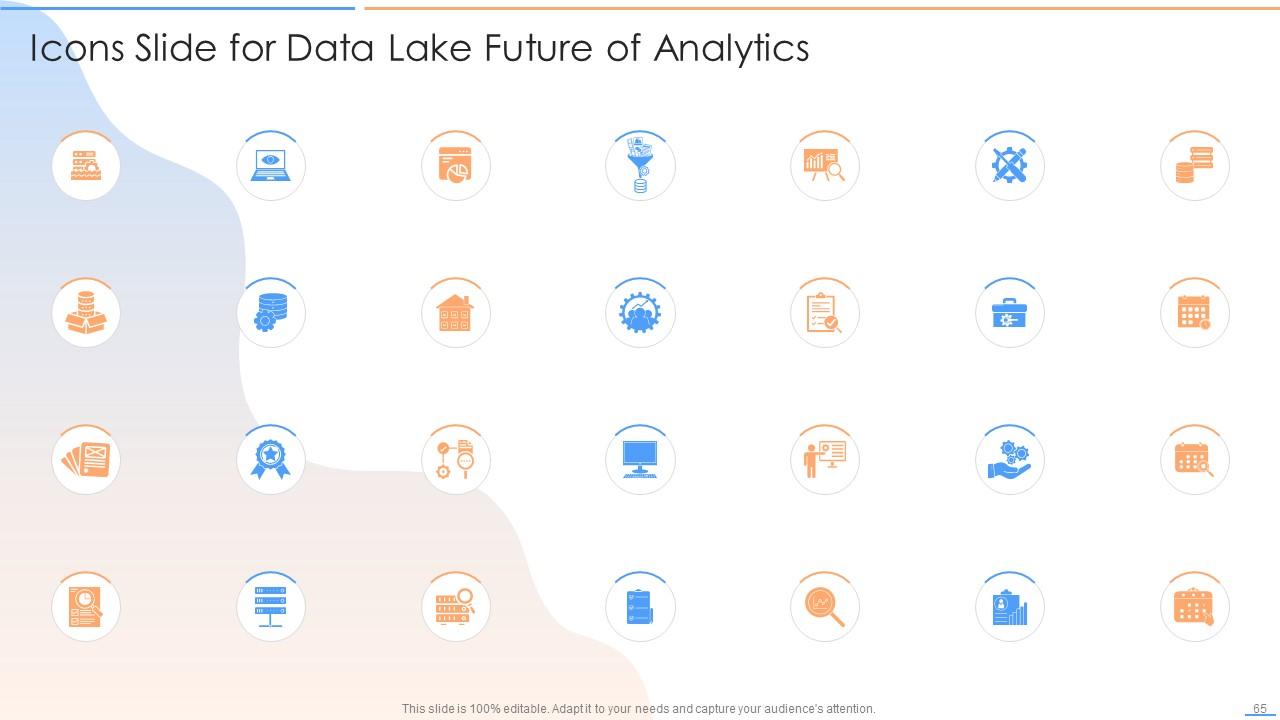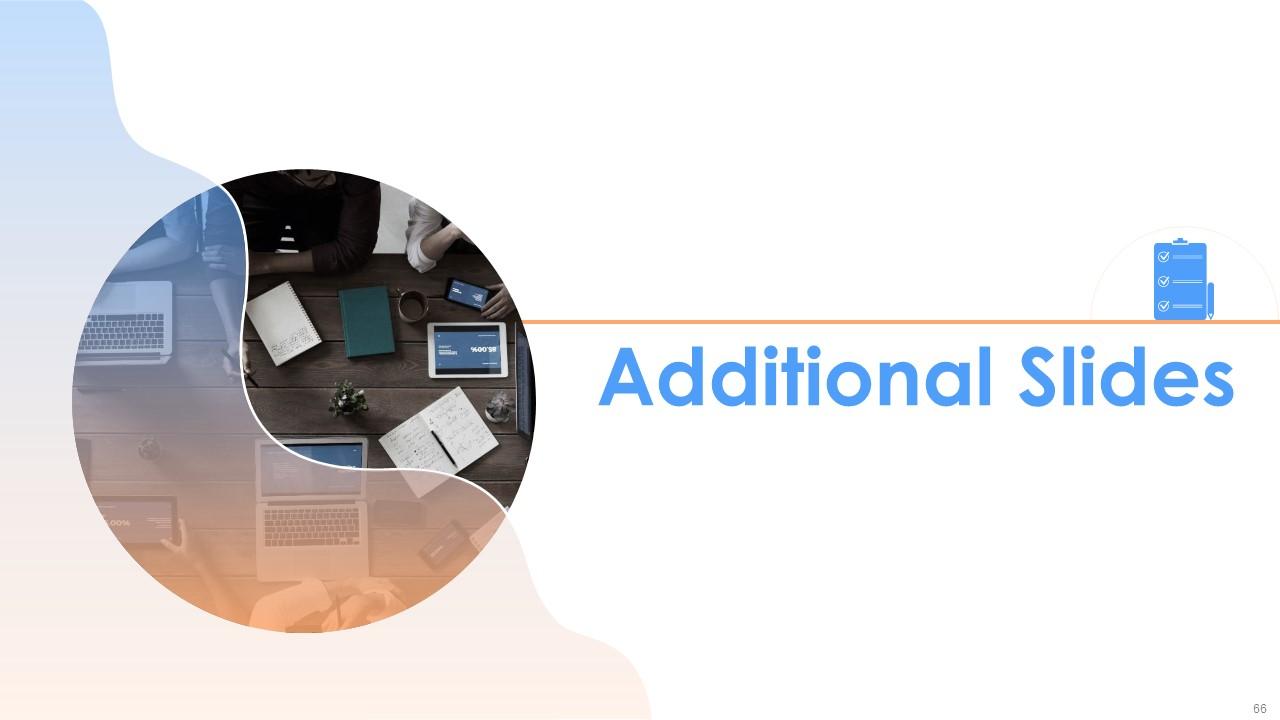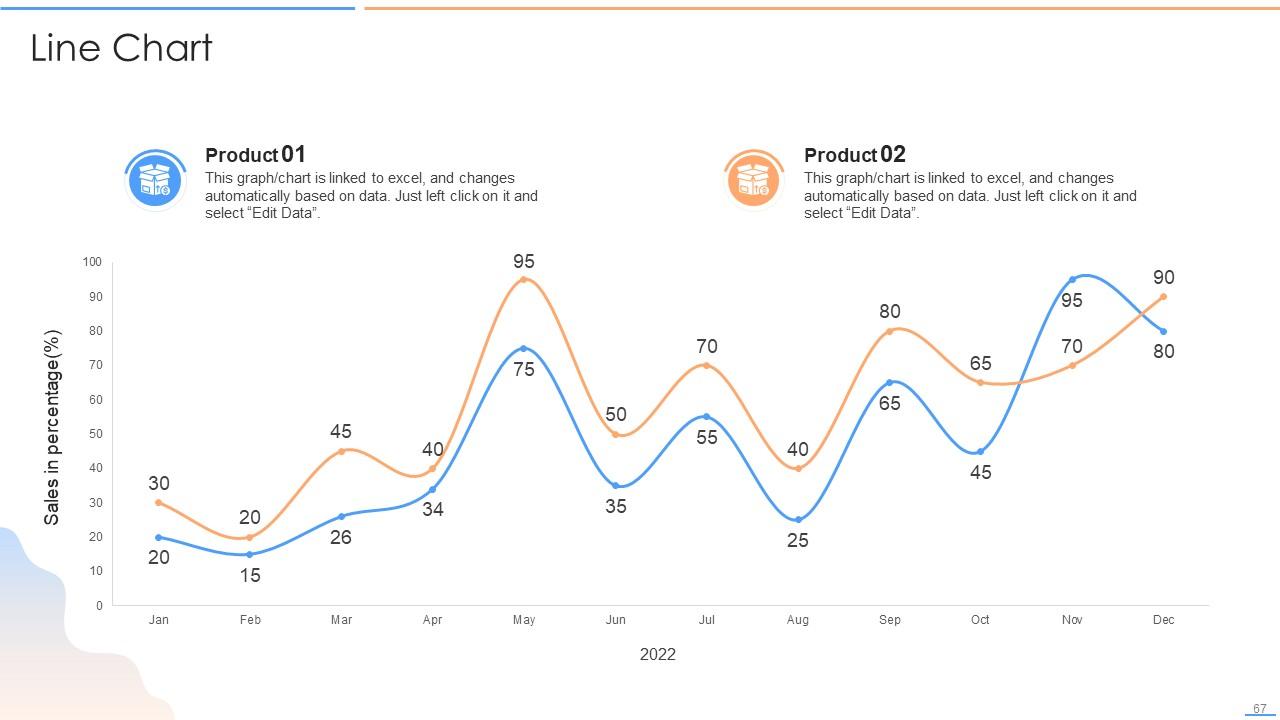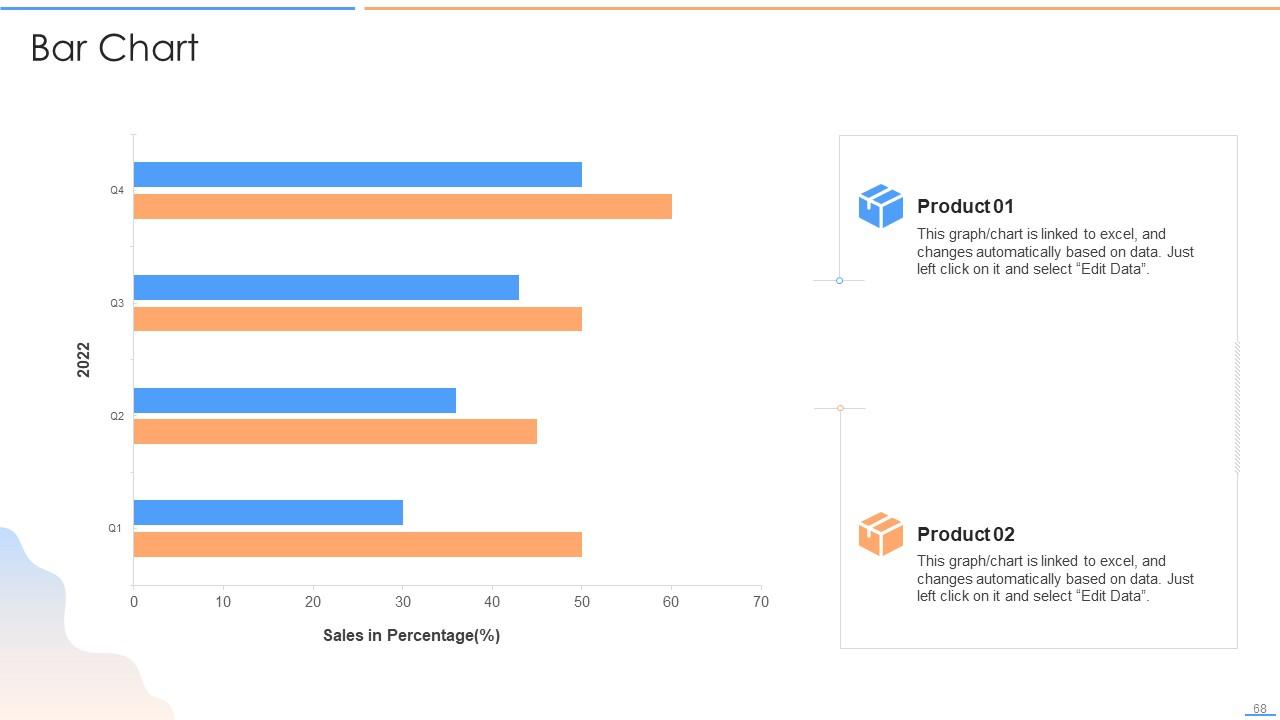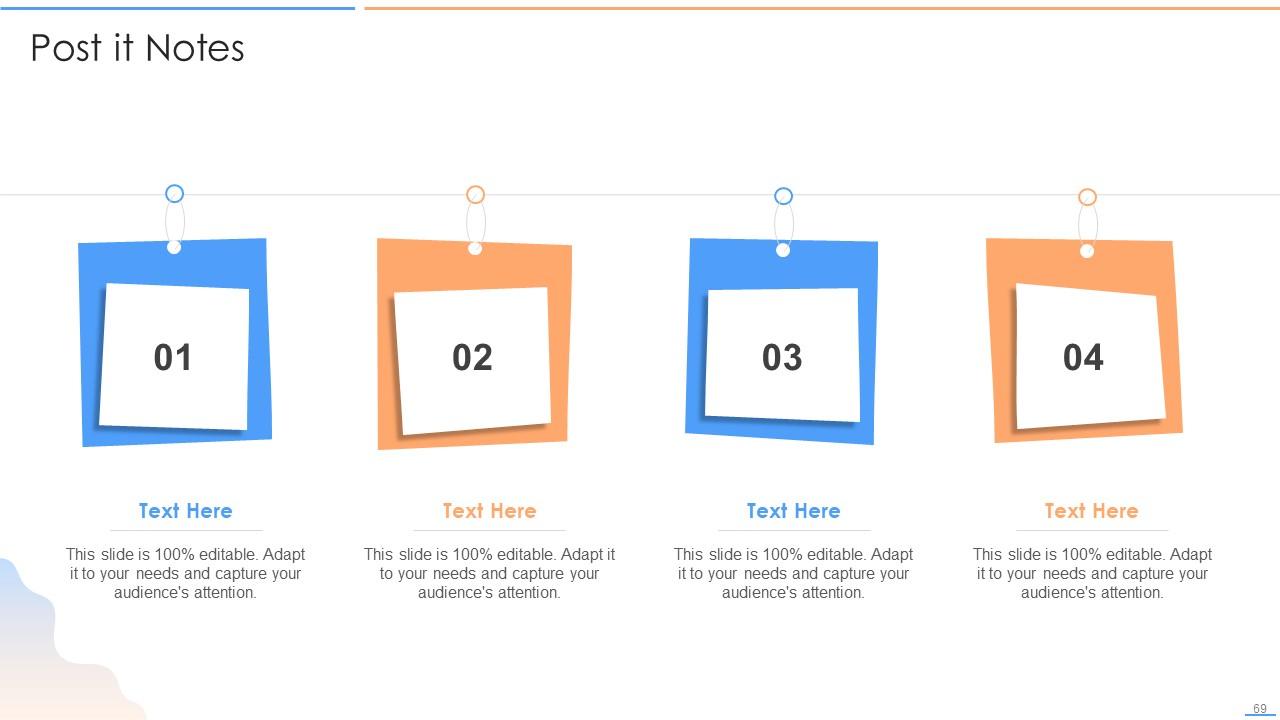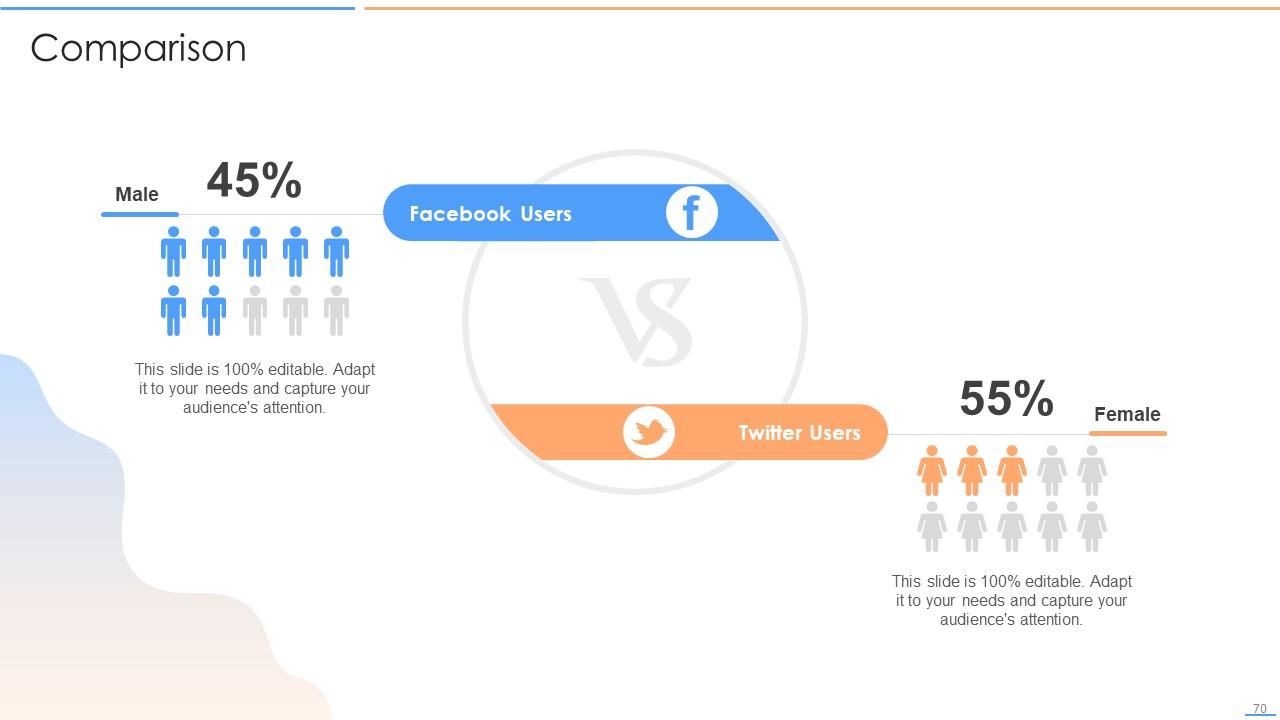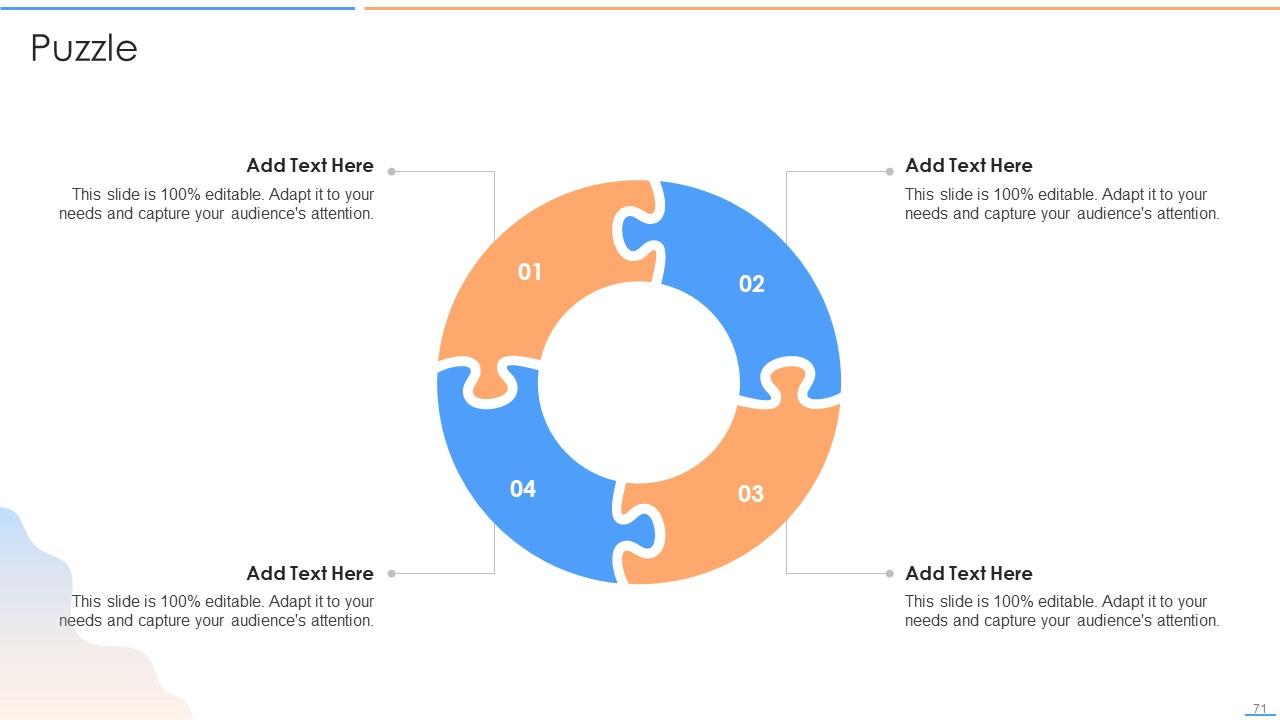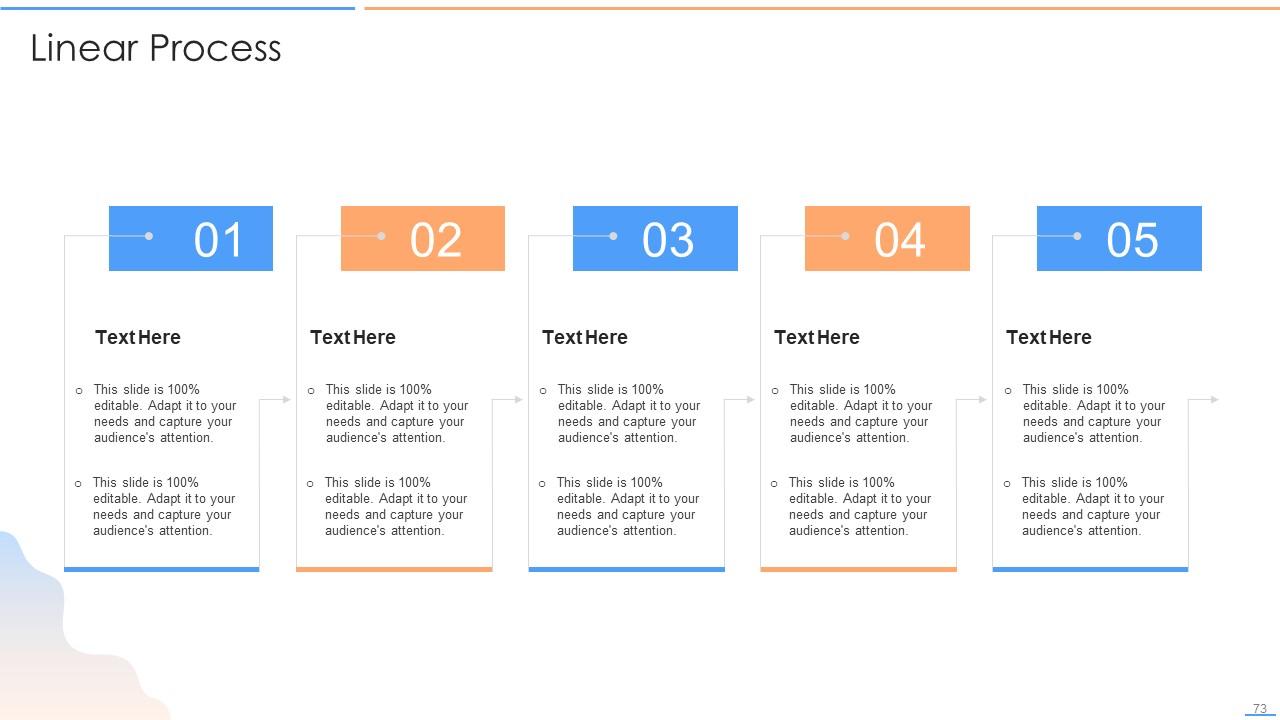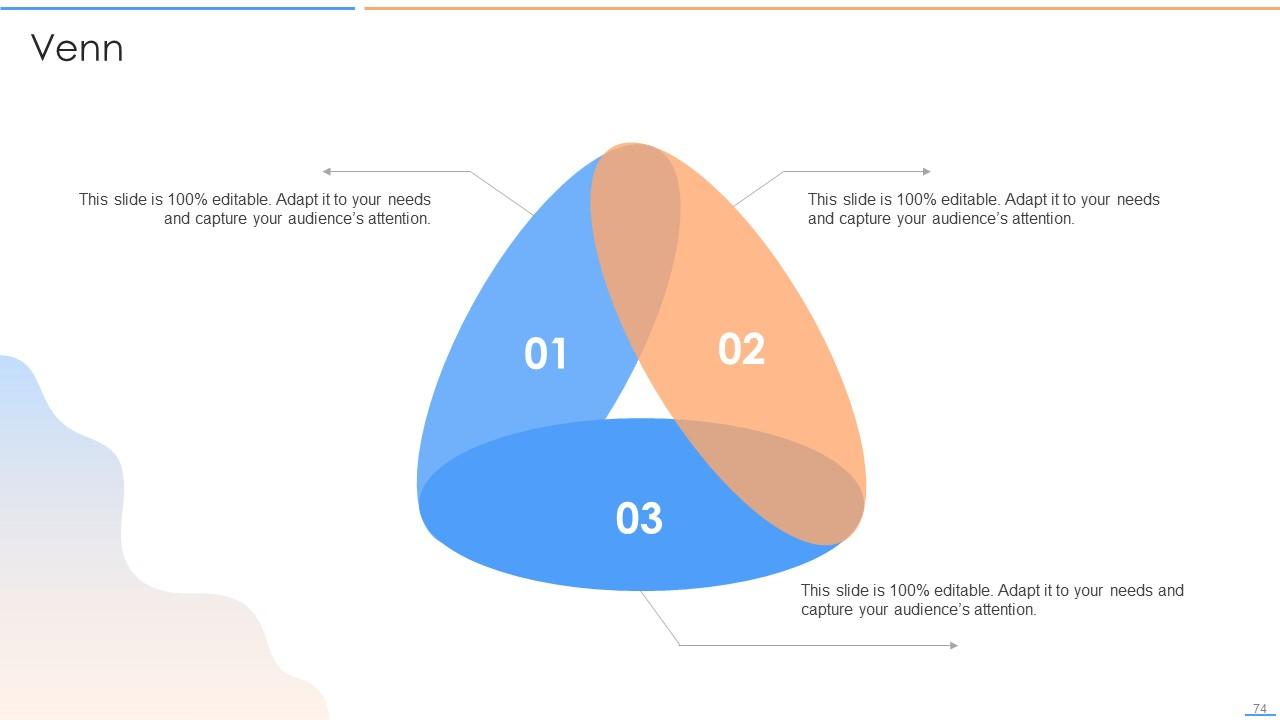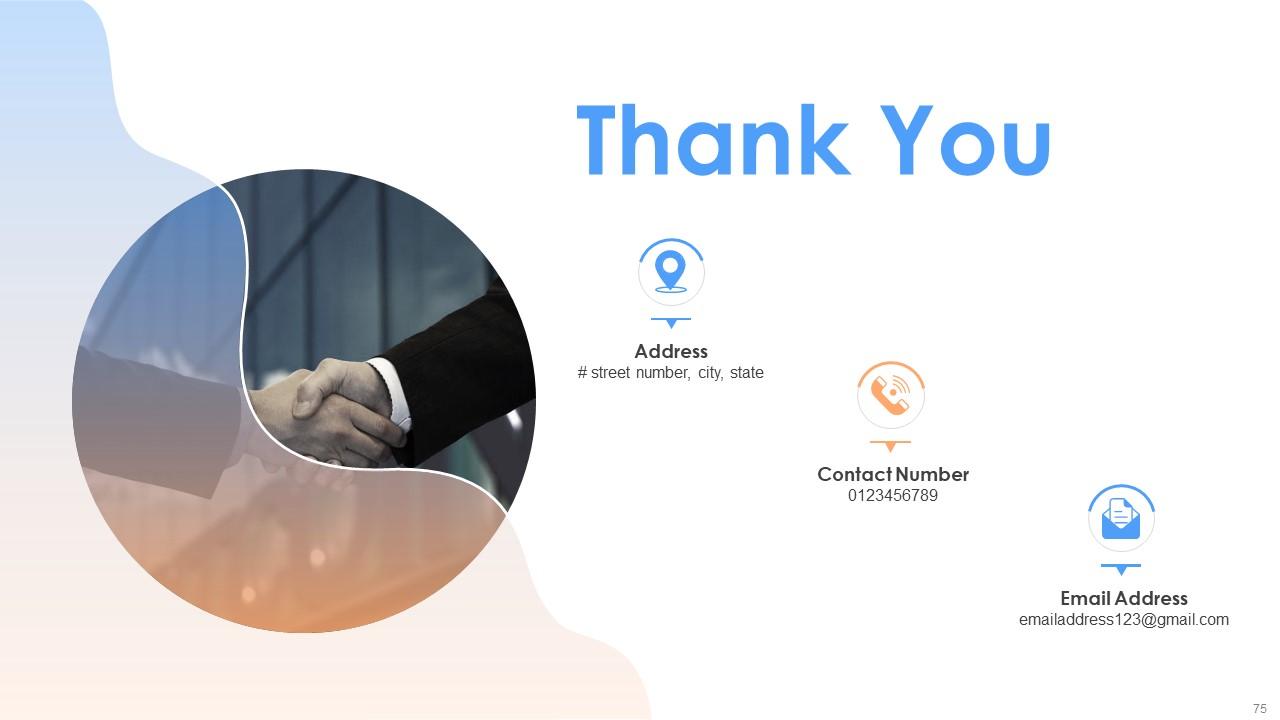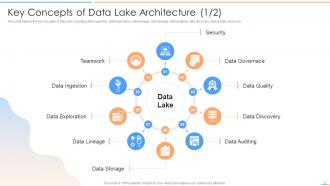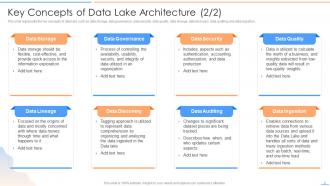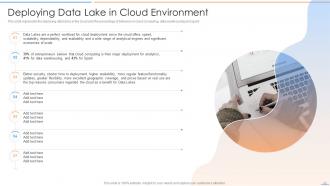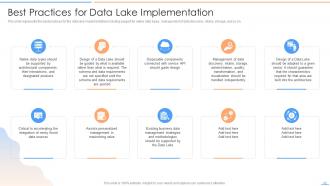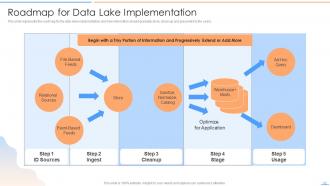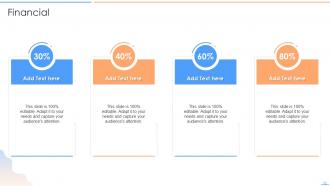Data Lake Future Of Analytics Powerpoint Presentation Slides
Here is an efficiently designed Data Lake Future of Analytics template that gives a brief idea about its architecture,essentials,foundational elements,need for data lake,and risks involved in data lake implementation. In this Data Lake PowerPoint Presentation,we have covered the overview of the data lake by showcasing its main features,key concepts,primary components,and working. In addition,this Data Lake Architecture and The Future of Log Analytics PPT contains four data lake formations on different architectures such as AWS,Hadoop,and Azure,along with a cloud data lake. Moreover,this Data Lake Formation with AWS Cloud PPT contains the data lake implementation methods such as on premise and cloud and the data lake implementation process. Lastly,this Data Lake Formation with Azure Cloud Platform deck comprises data lake vendors and tools,use cases and applications,and a comparison of the data lake with other storage systems. It incorporates slides showcasing a 30 60 90 days plan,a roadmap,and a dashboard for data lake reporting. Book a free demo with our research team now.
Here is an efficiently designed Data Lake Future of Analytics template that gives a brief idea about its architecture,essen..
- Google Slides is a new FREE Presentation software from Google.
- All our content is 100% compatible with Google Slides.
- Just download our designs, and upload them to Google Slides and they will work automatically.
- Amaze your audience with SlideTeam and Google Slides.
-
Want Changes to This PPT Slide? Check out our Presentation Design Services
- WideScreen Aspect ratio is becoming a very popular format. When you download this product, the downloaded ZIP will contain this product in both standard and widescreen format.
-

- Some older products that we have may only be in standard format, but they can easily be converted to widescreen.
- To do this, please open the SlideTeam product in Powerpoint, and go to
- Design ( On the top bar) -> Page Setup -> and select "On-screen Show (16:9)” in the drop down for "Slides Sized for".
- The slide or theme will change to widescreen, and all graphics will adjust automatically. You can similarly convert our content to any other desired screen aspect ratio.
Compatible With Google Slides

Get This In WideScreen
You must be logged in to download this presentation.
PowerPoint presentation slides
This complete presentation has PPT slides on wide range of topics highlighting the core areas of your business needs. It has professionally designed templates with relevant visuals and subject driven content. This presentation deck has total of seventy five slides. Get access to the customizable templates. Our designers have created editable templates for your convenience. You can edit the color,text and font size as per your need. You can add or delete the content if required. You are just a click to away to have this ready-made presentation. Click the download button now.
People who downloaded this PowerPoint presentation also viewed the following :
Content of this Powerpoint Presentation
Slide 1: This slide displays title i.e. 'Data Lake Future of Analytics' and your Company Name.
Slide 2: This slide presents agenda.
Slide 3: This slide exhibits table of contents.
Slide 4: This slide also shows table of contents.
Slide 5: This slide depicts title for seven topics that are to be covered next in the template.
Slide 6: This slide represents the overview of data lake is and how it stores machine learning, analytics, on-premise data movement, real-time data movement.
Slide 7: This slide represents the main features of data lakes, such as the ability to store structured and unstructured data, etc.
Slide 8: This slide depicts the key concepts of data lake, including data ingestion, data exploration, data lineage, data storage, data auditing, etc.
Slide 9: This slide represents the key concepts of data lake such as data storage, data governance, data security, data quality, data lineage, etc.
Slide 10: This slide depicts the primary components of the data lake architecture, such as metadata, compute, format and storage, and the task of each component.
Slide 11: This slide describes the essential elements of data lake and analytics solution including data movement, analytics, machine learning, etc.
Slide 12: This slide represents the working of the data lakes, including how different types of data are stored at a centralized place, etc.
Slide 13: This slide depicts title for three topics that are to be covered next in the template.
Slide 14: This slide represents the data lake foundation elements such as data lake provisioning, data ingestion sources, landing zones, etc.
Slide 15: This slide describes the process of building data lakes by defining how optimized data sets are created from raw data files, etc.
Slide 16: This slide represents the building data lake team and their roles and responsibilities, including chief analytics officer, data analyst, etc.
Slide 17: This slide depicts title for five topics that are to be covered next in the template.
Slide 18: This slide represents why organizations should use data lakes based on their features including business agility, beneficial forecasts, etc.
Slide 19: This slide describes the value of a data lake including improved customer interactions, etc.
Slide 20: This slide depicts the purpose of the data lake in the business such as beneficial for time-to-market analytics, IT-driven business process, etc.
Slide 21: This slide depicts the benefits of the data lake including low-cost scalability and flexibility, collection of multiple content sources, etc.
Slide 22: This slide depicts the key pointers to help to understand organizations if they need to maintain a data lake for critical business information.
Slide 23: This slide depicts title for two topics that are to be covered next in the template.
Slide 24: This slide represents the architecture of the data lake by defining its three major components such as sources, data processing layer, and targets.
Slide 25: This slide describes the architecture layers of the data lake such as ingestion, distillation, processing, etc.
Slide 26: This slide depicts title for three topics that are to be covered next in the template.
Slide 27: This slide depicts the data lakes on AWS architecture through the data lake console and data lake command-line interface (CLI).
Slide 28: This slide represents the data lakes on Hadoop architecture by covering details of sources, ingestion tier, unified operations tier, etc.
Slide 29: This slide describes the data lakes on Azure architecture by covering details of data gathering, ingestion layer, etc.
Slide 30: This slide depicts title for three topics that are to be covered next in the template.
Slide 31: This slide describes the cloud-based data lake, how these data lakes can eliminate on-premise data lake challenges and are scalable and cost-effective.
Slide 32: This slide depicts the cloud data lake challenges such as data security, data swamp, on-premise data warehouse, and data governance.
Slide 33: This slide represents the working of the cloud data lake and how different personnel of the company extract information from the centralized data repository.
Slide 34: This slide depicts title for three topics that are to be covered next in the template.
Slide 35: This slide depicts the risks of using data lake such as the higher risk involved in data lake construction, storage and computing expenses, etc.
Slide 36: This slide depicts the challenges of data lakes such as high cost, managed difficulty, long time-to-value, etc.
Slide 37: This slide describes how data lakehouse solves data lake challenges through transactional storage layer, comparable data structures, etc.
Slide 38: This slide depicts title for two topics that are to be covered next in the template.
Slide 39: This slide depicts the strategies to avoid the data swamp in the data lake through data integrity, a comprehensive plan in place, etc.
Slide 40: This slide depicts how to avoid a data swamp in a data lake by defining the checklist of questions.
Slide 41: This slide depicts title for two topics that are to be covered next in the template.
Slide 42: This slide depicts the on-premise data lake, how these are deployed and including its challenges such as space, setup, cost, etc.
Slide 43: This slide represents the deploying data lakes in the cloud and the percentage of believers in cloud computing, data warehousing and spark.
Slide 44: This slide depicts title for four topics that are to be covered next in the template.
Slide 45: This slide represents the best practices for the data lake implementation including support for native data types, etc.
Slide 46: This slide depicts the stages of data lake implementation such as the collection of raw data, environment for data science, etc.
Slide 47: This slide represents the maturity stages of the data lake, including handling & ingesting data at scale, building the analytical muscle, etc.
Slide 48: This slide represents the data lake file storage system based on big data’s five Vs such as volume, velocity, value, veracity and variety, etc.
Slide 49: This slide depicts title for two topics that are to be covered next in the template.
Slide 50: This slide represents the data lake tools and providers, and tools are categorized based on storage, data format, compute, etc.
Slide 51: This slide represents the prominent data lake vendors such as AWS, Oracle, Google, Cloudera, Microsoft, and Snowflake and the services they provide.
Slide 52: This slide depicts title for two topics that are to be covered next in the template.
Slide 53: This slide depicts the use cases of data lakes such as data-in-place analytics, machine learning model training and archival and historical data storage.
Slide 54: This slide represents the application of data lakes in the media and entertainment industries, telecommunications industry, and financial services.
Slide 55: This slide depicts title for three topics that are to be covered next in the template.
Slide 56: This slide depicts the difference between a data lake and a data warehouse based on characteristics such as data, schema, price, performance, etc.
Slide 57: This slide represents the comparison between data warehouse, data lake and data lakehouse based on the period and components of both, etc.
Slide 58: This slide represents a comparison between data lakes, data lake houses, and data warehouses based on factors such as type of data, cost, etc.
Slide 59: This slide depicts title for the topic that is to be covered next in the template.
Slide 60: This slide describes the 30-60-90 days plan for the data lake by covering the tasks that will be performed at each interval of 30 days.
Slide 61: This slide depicts title for the topic that is to be covered next in the template.
Slide 62: This slide represents the roadmap for the data lake implementation and how information should gradually store, clean-up and presented to the users.
Slide 63: This slide depicts title for the topic that is to be covered next in the template.
Slide 64: This slide represents the data lake reporting dashboard by covering the total number of users, total lake size, trusted zone size, etc.
Slide 65: This is the icons slide.
Slide 66: This slide presents title for additional slides.
Slide 67: This slide exhibits monthly sales line charts for different products. The charts are linked to Excel.
Slide 68: This slide exhibits sales bar charts for different products. The charts are linked to Excel.
Slide 69: This slide depicts posts for past experiences of clients.
Slide 70: This slide highlights comparison of products based on selects.
Slide 71: This slide shows puzzle for displaying elements of company.
Slide 72: This slide showcases financials of company.
Slide 73: This slide presents linear process.
Slide 74: This slide displays Venn.
Slide 75: This is thank you slide & contains contact details of company like office address, phone no., etc.
Data Lake Future Of Analytics Powerpoint Presentation Slides with all 80 slides:
Use our Data Lake Future Of Analytics Powerpoint Presentation Slides to effectively help you save your valuable time. They are readymade to fit into any presentation structure.
FAQs
The main features of a data lake include the ability to store both structured and unstructured data, as well as providing features such as data ingestion, exploration, storage, auditing, governance, security, quality, and lineage.
The primary components of data lake architecture include metadata, compute, format and storage. Each component is responsible for specific tasks within the architecture.
Organizations should use data lakes because of their many benefits, including low-cost scalability and flexibility, improved customer interactions, and time-to-market analytics. Data lakes are also beneficial for IT-driven business processes.
The risks and challenges associated with data lakes include higher risks involved in data lake construction, storage and computing expenses, high cost, managed difficulty, long time-to-value, and the potential for a data swamp.
The best practices for implementing a data lake include supporting native data types, collecting raw data, creating an environment for data science, and ensuring data quality, governance, and security. The stages of data lake implementation include handling and ingesting data at scale, building the analytical muscle, and achieving self-service analytics.
-
Great experience, I would definitely use your services further.
-
I took a chance with SlideTeam. I never looked back. Great products and great service.


